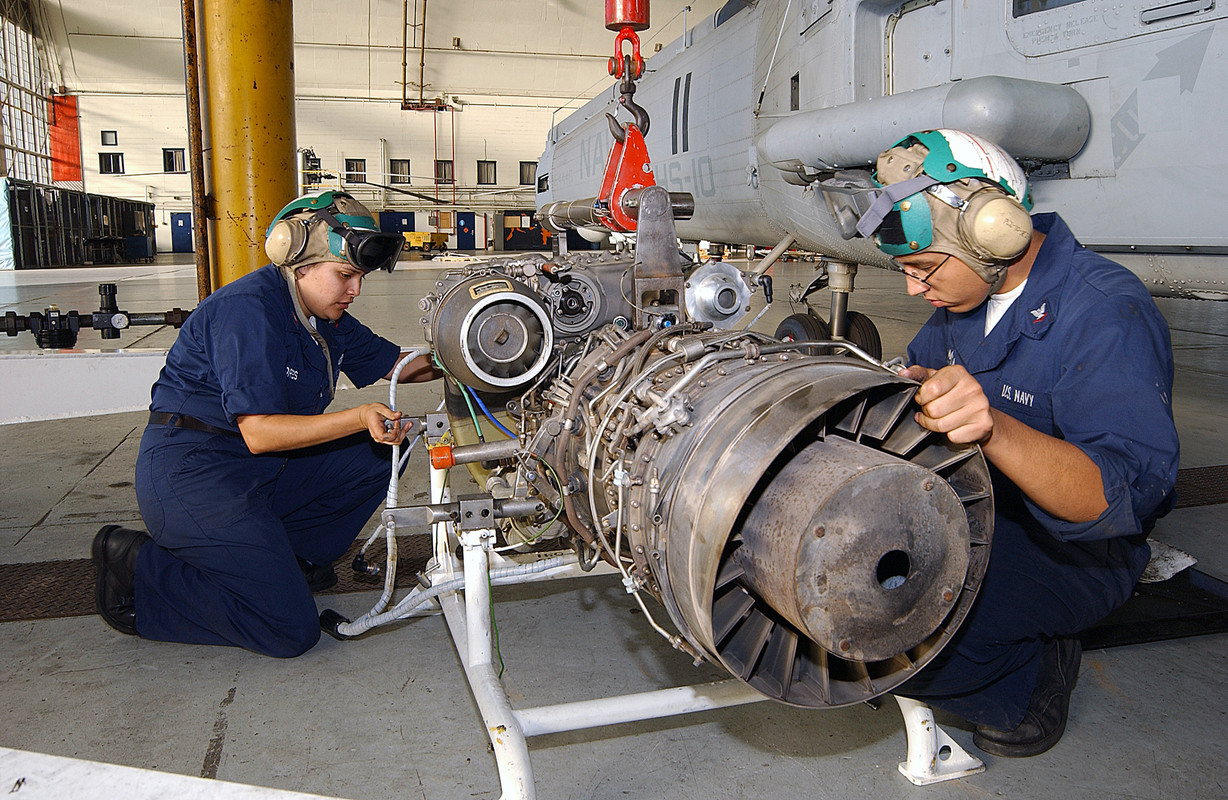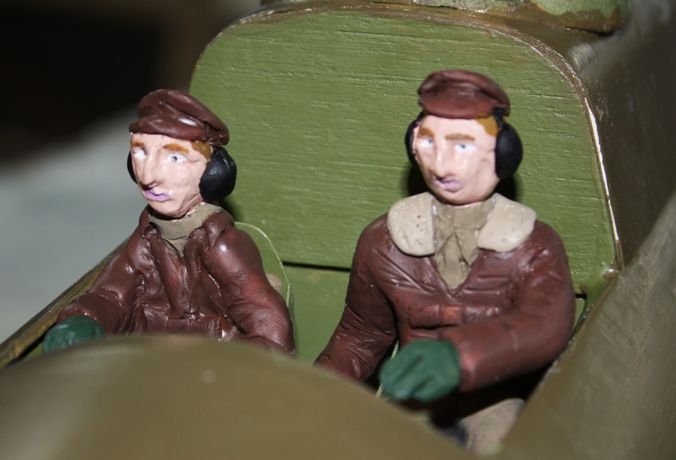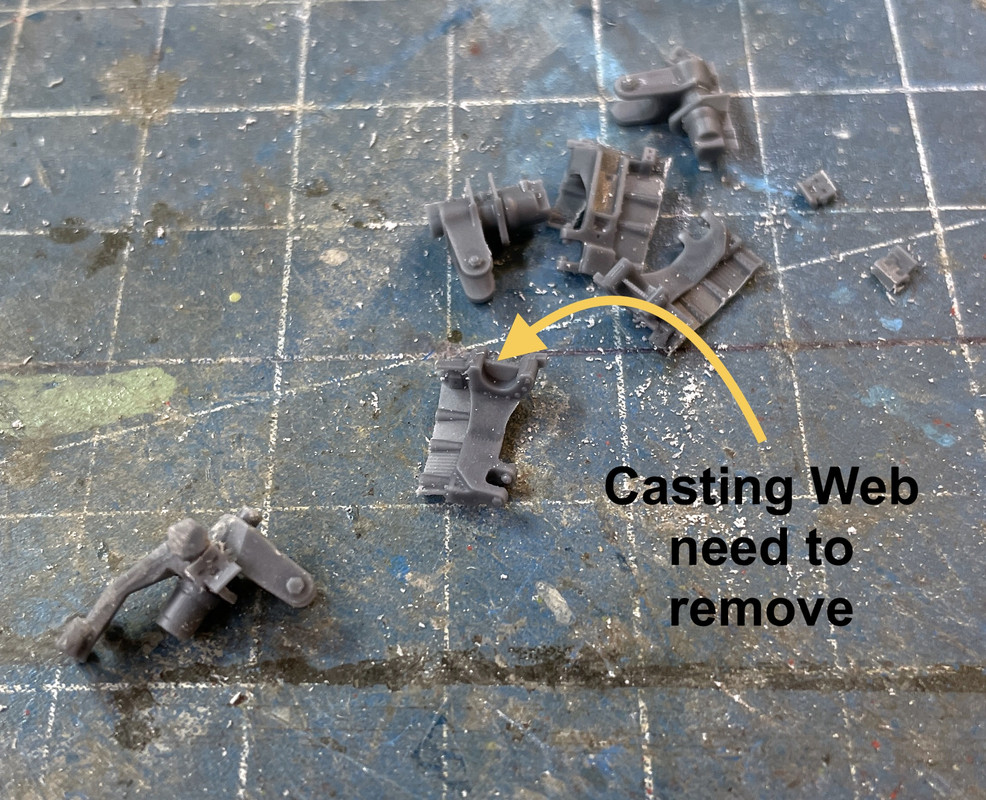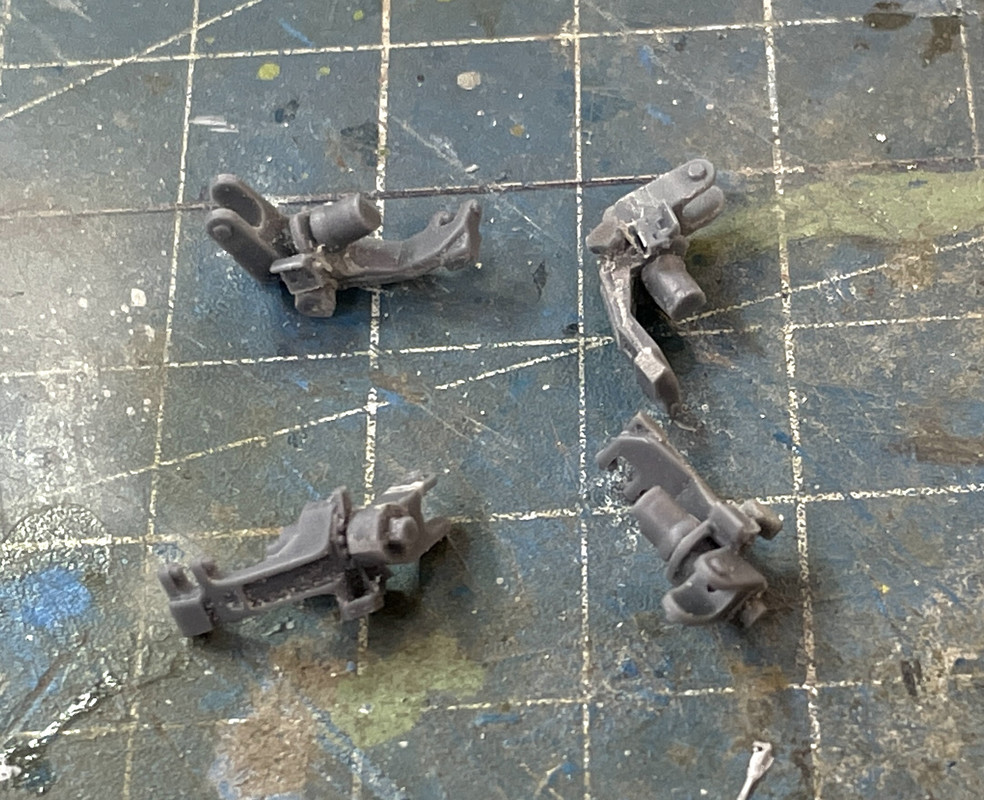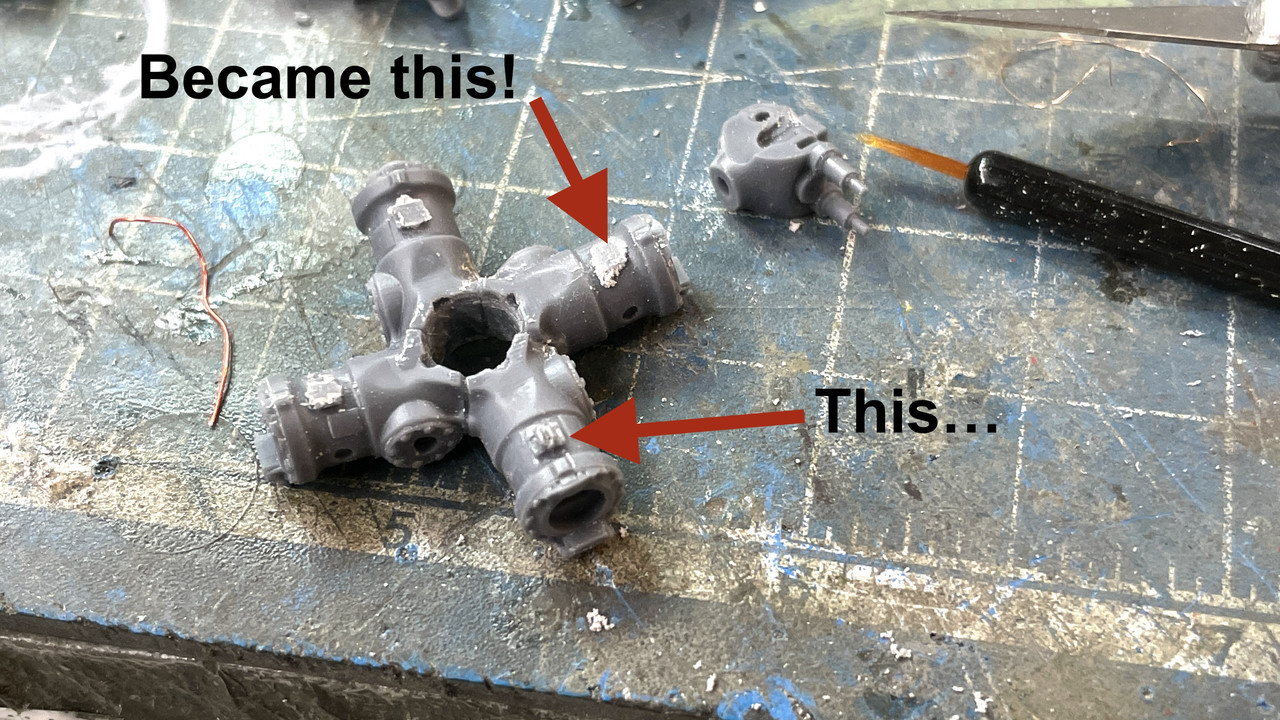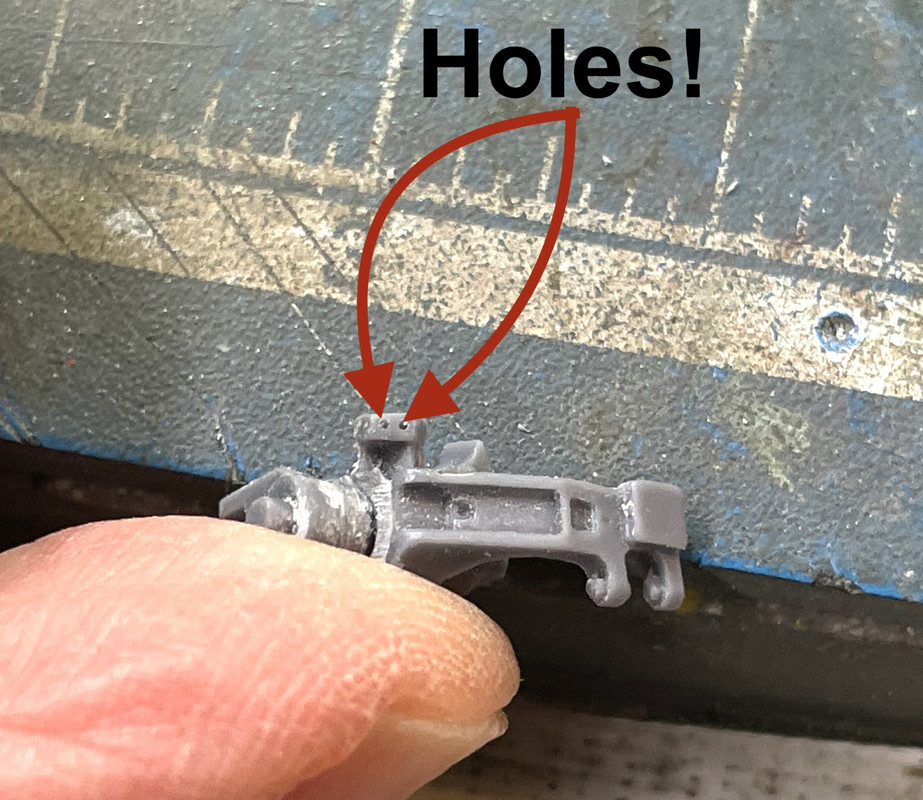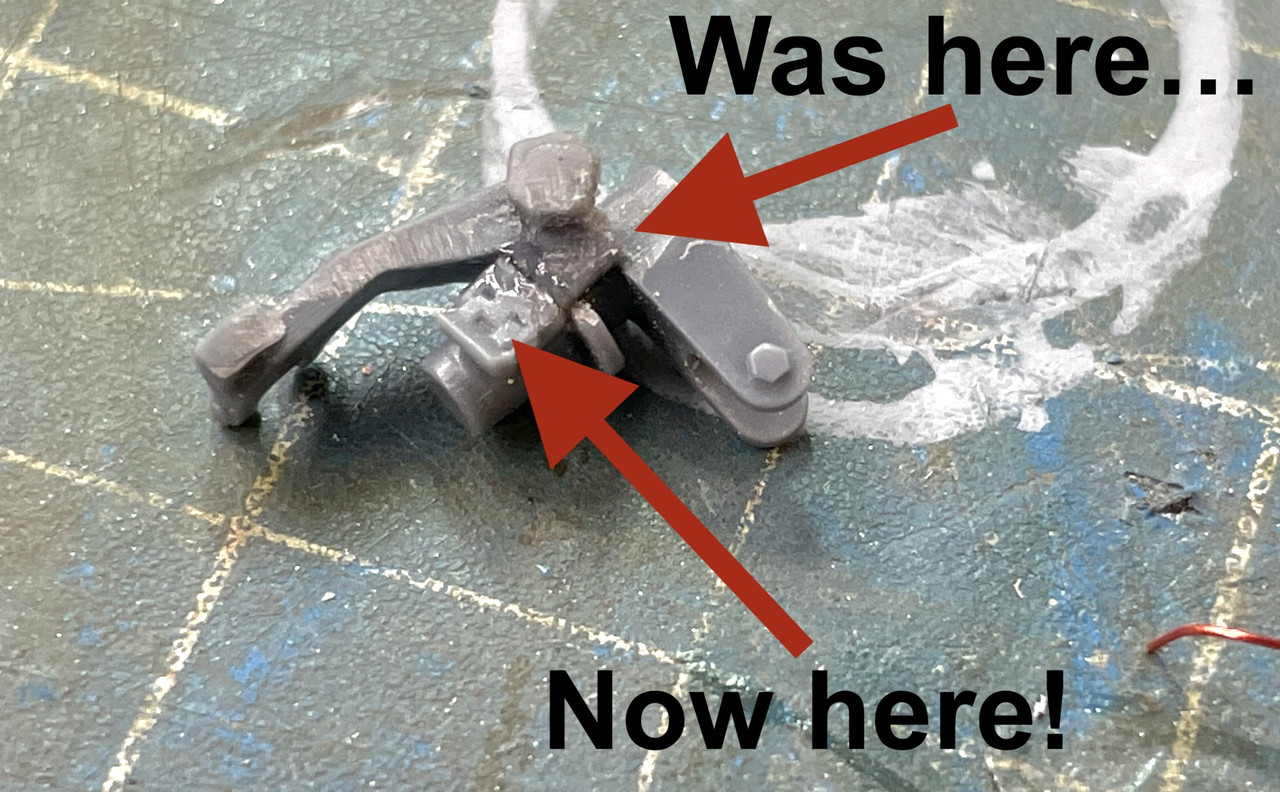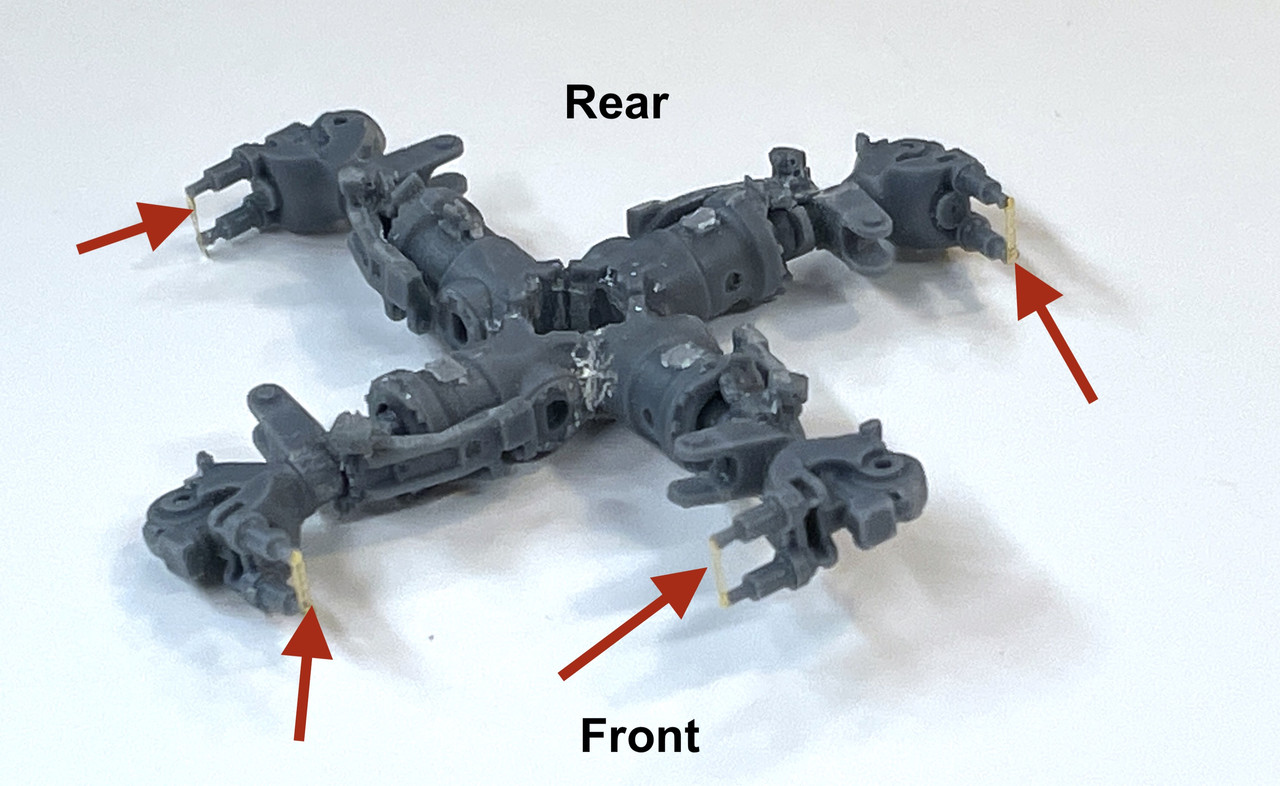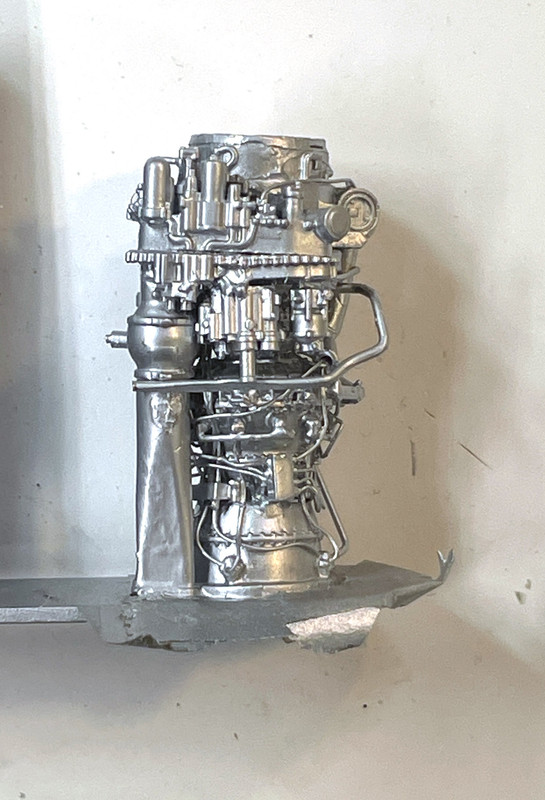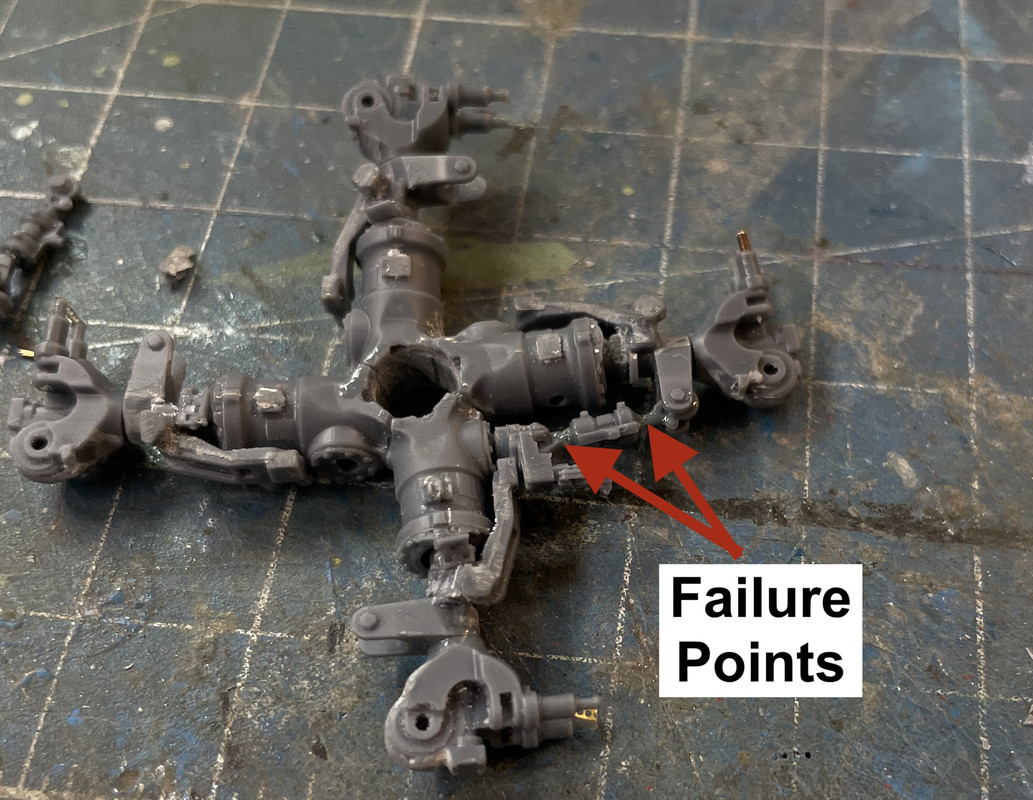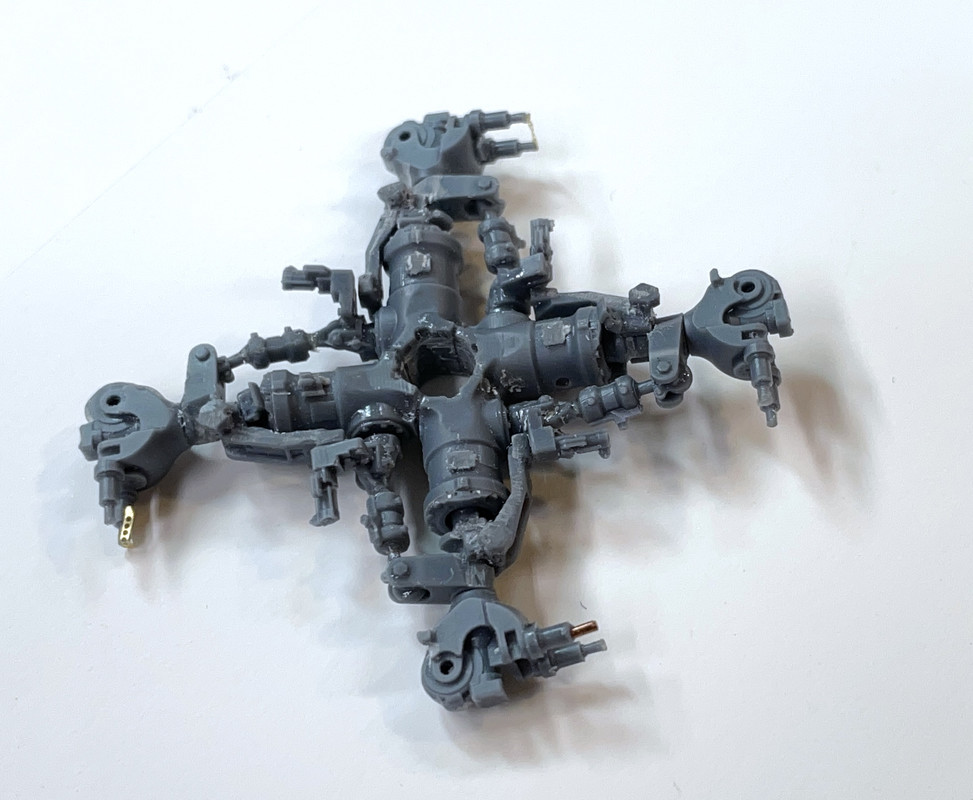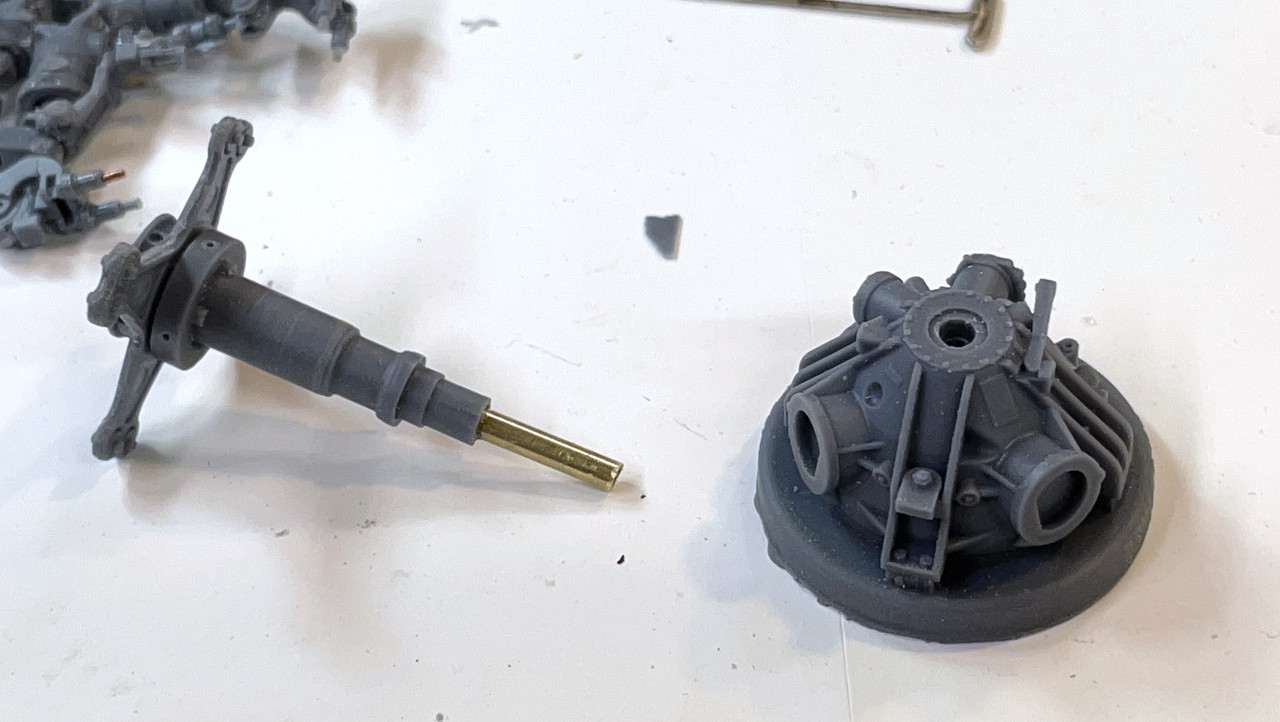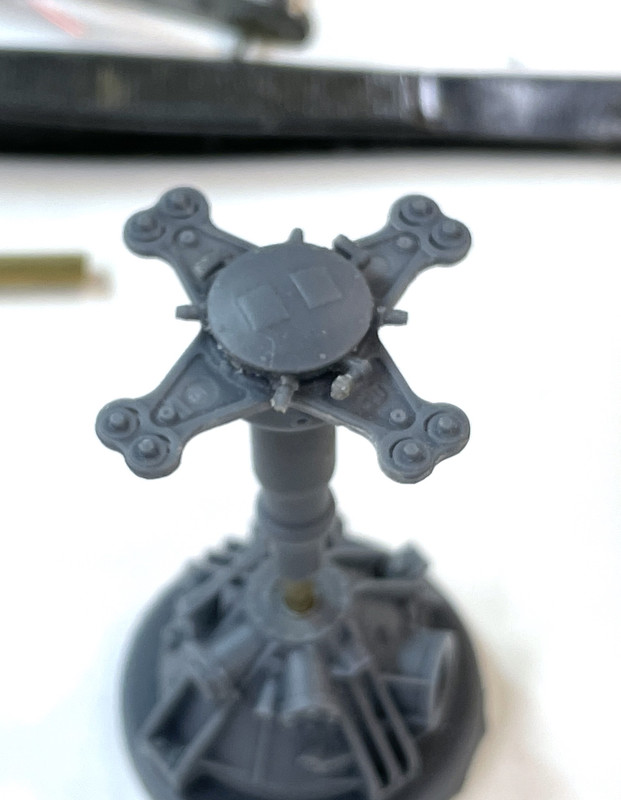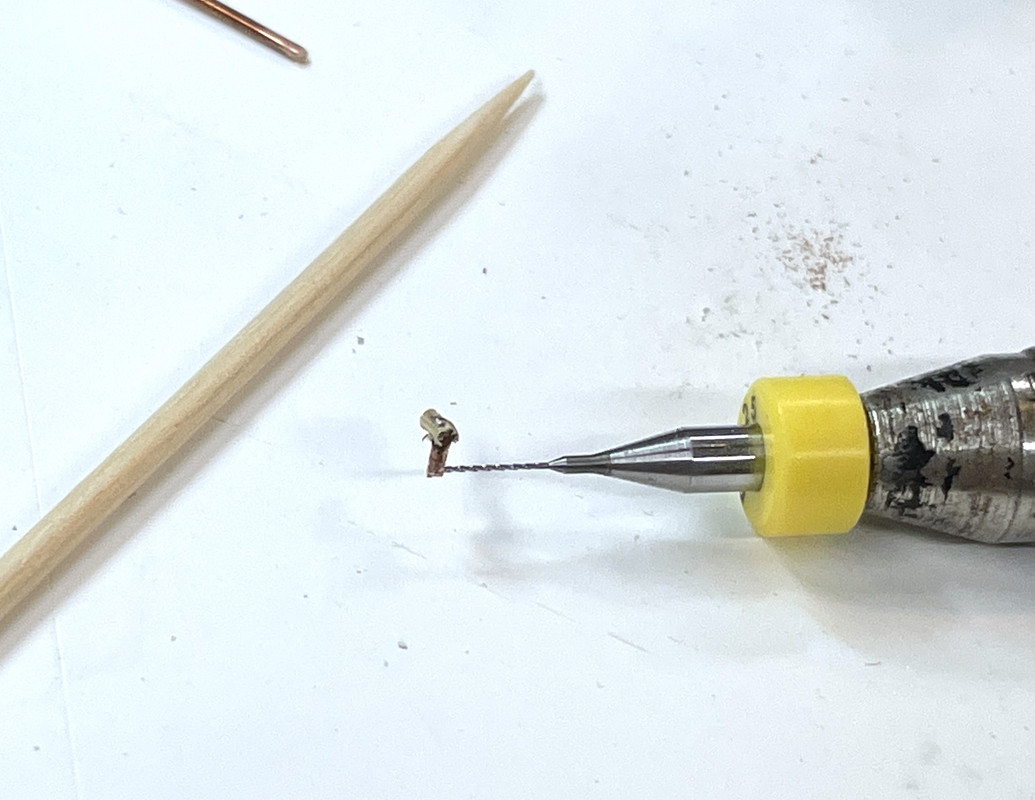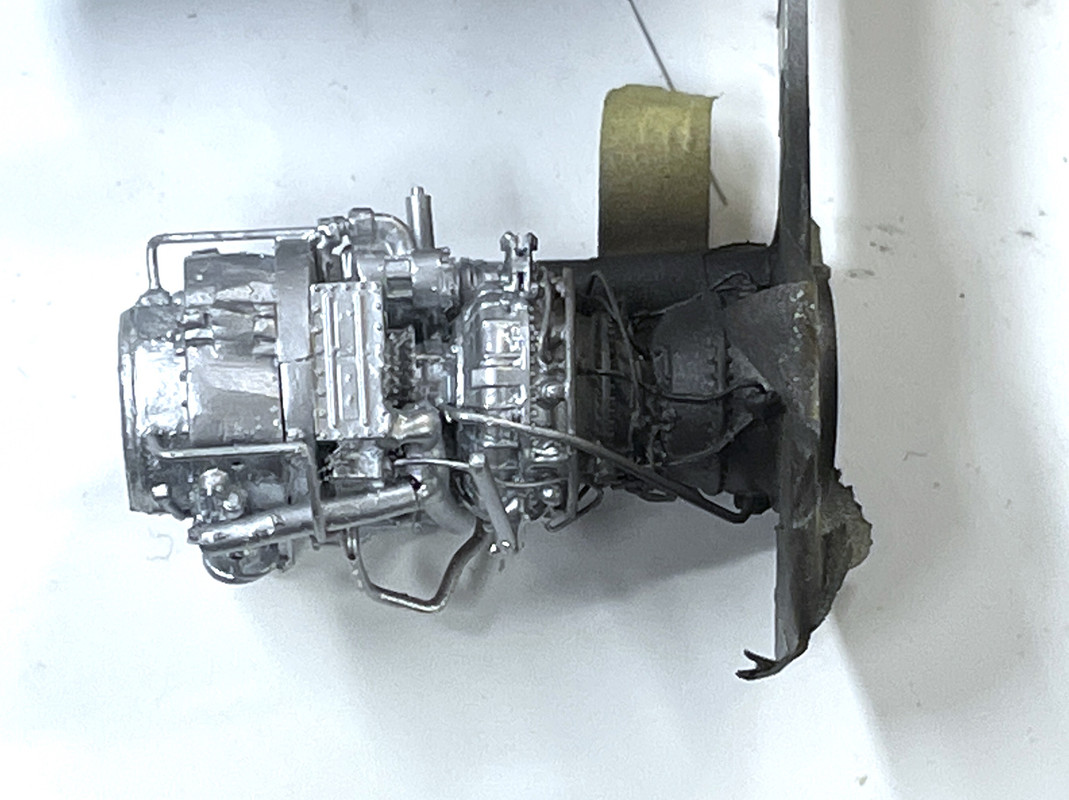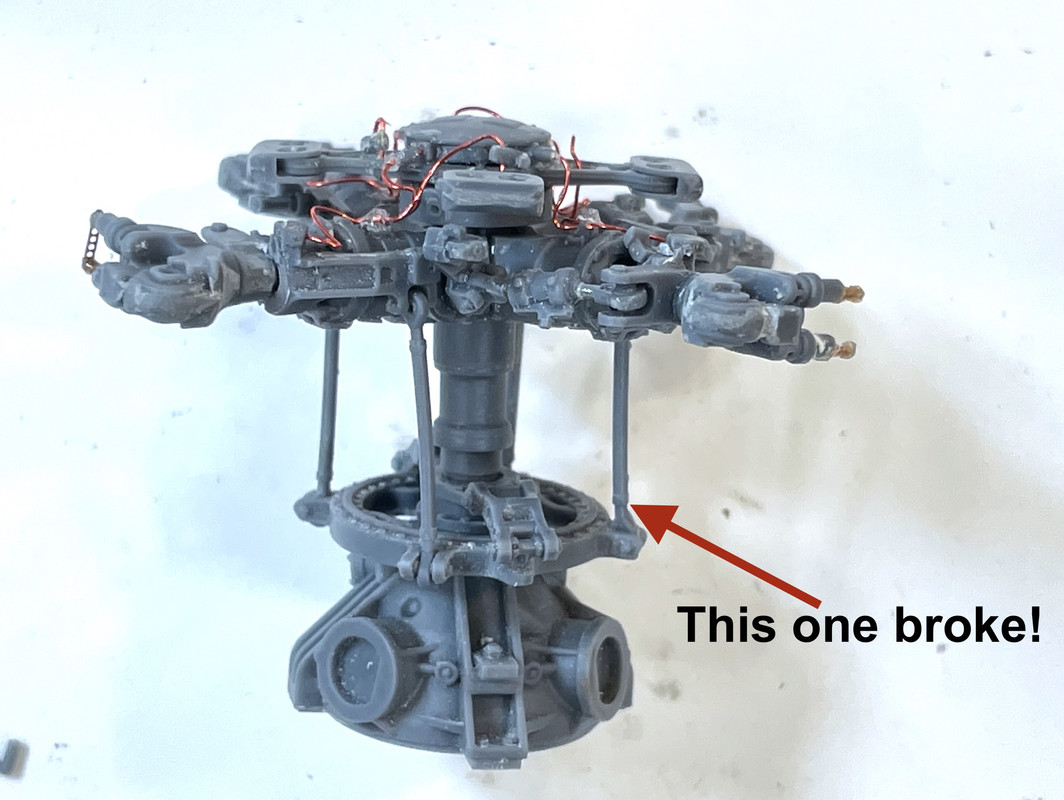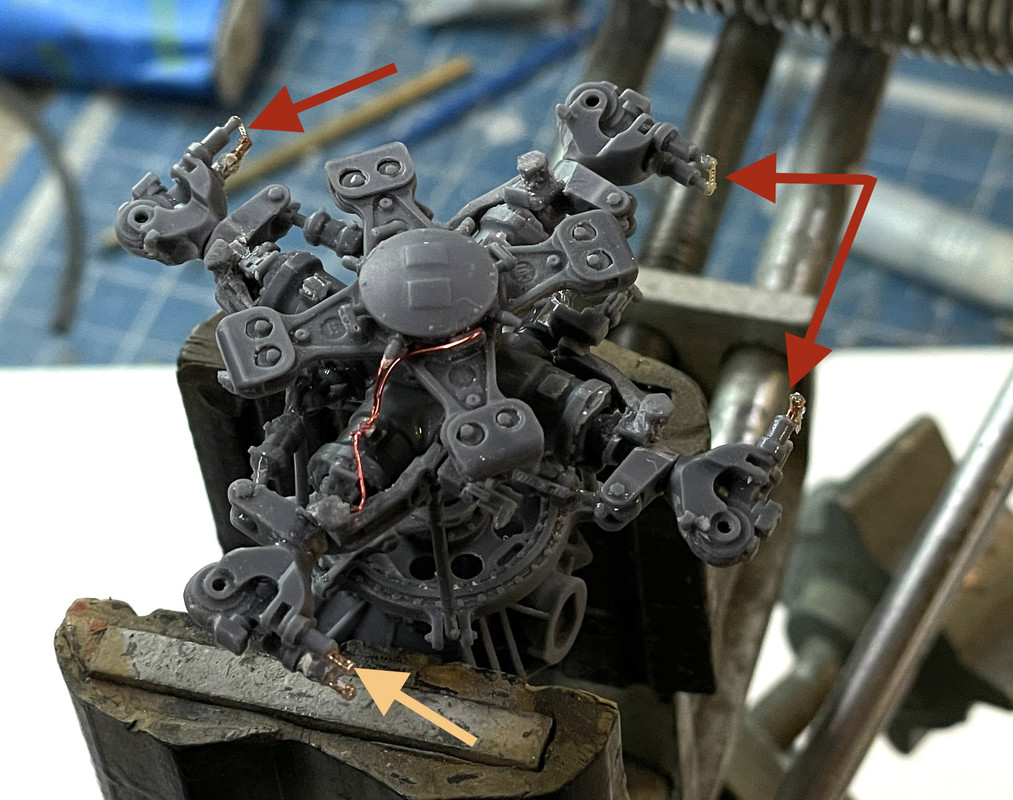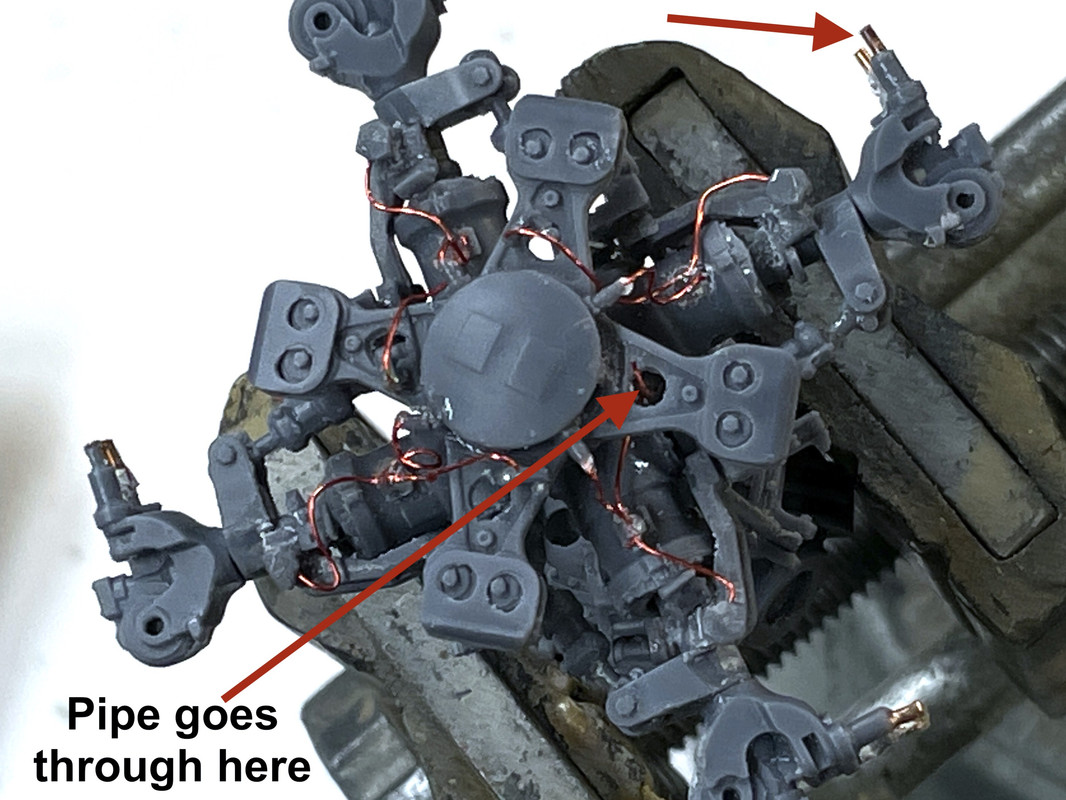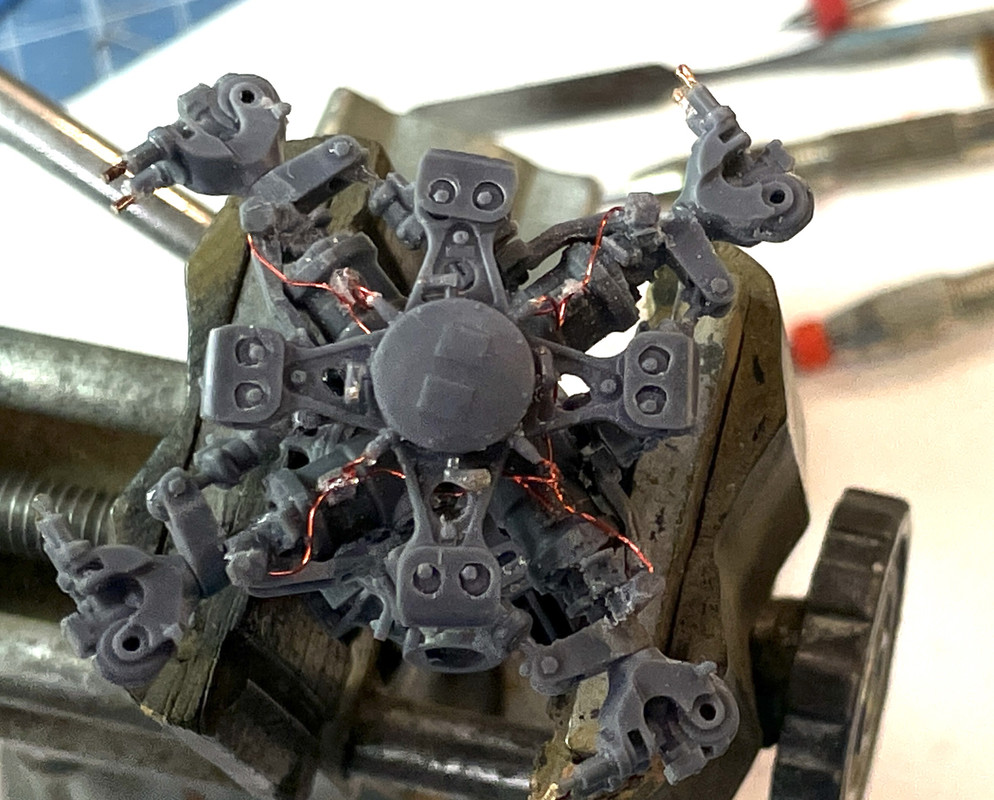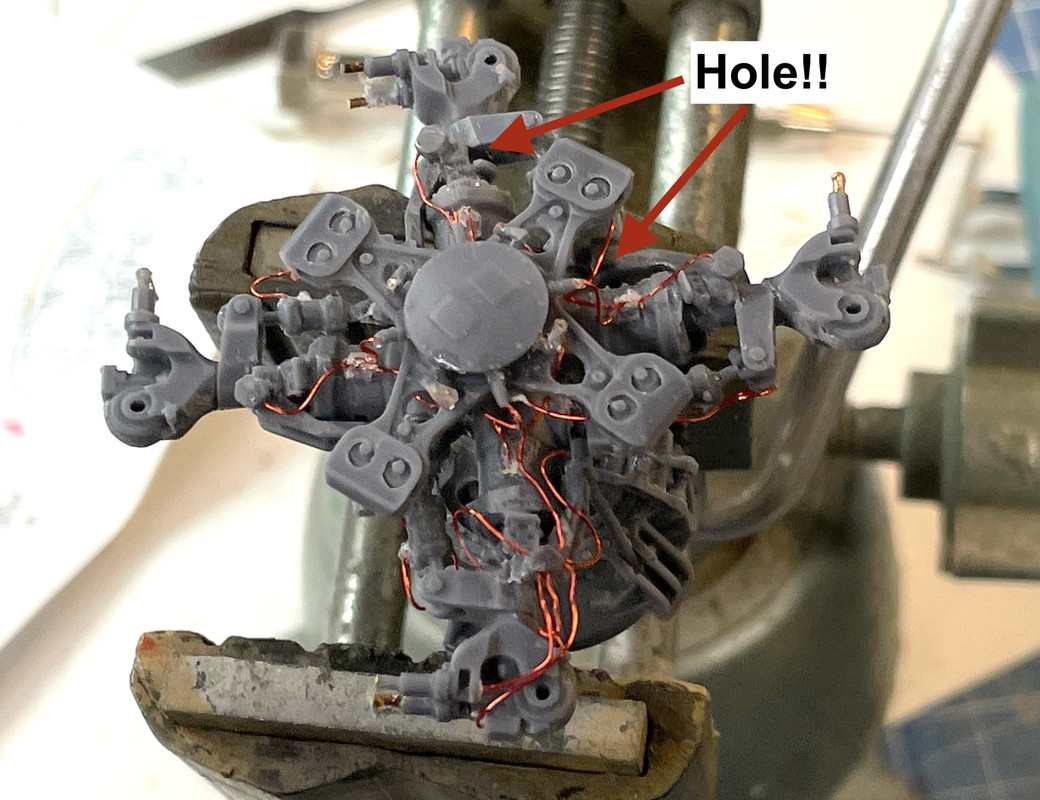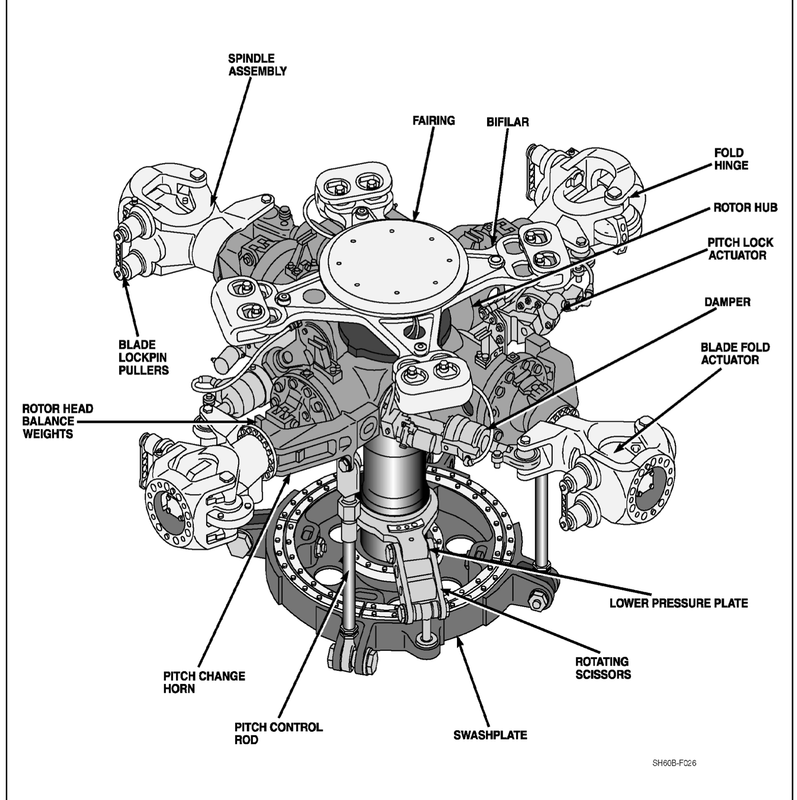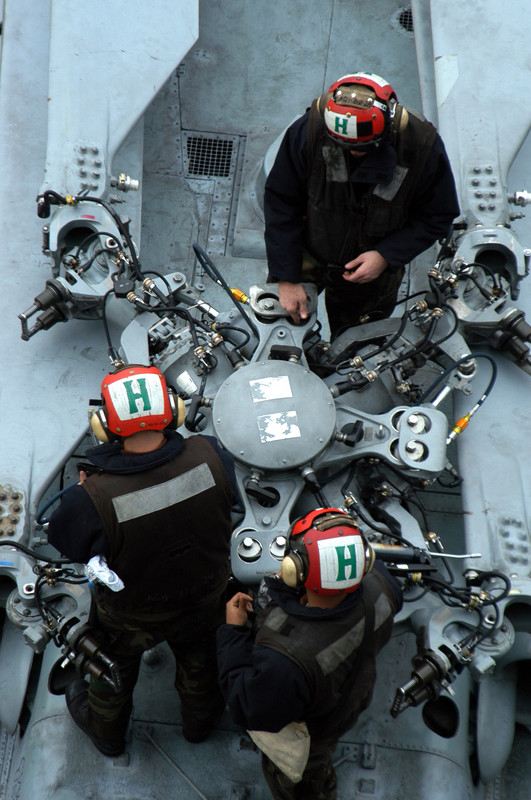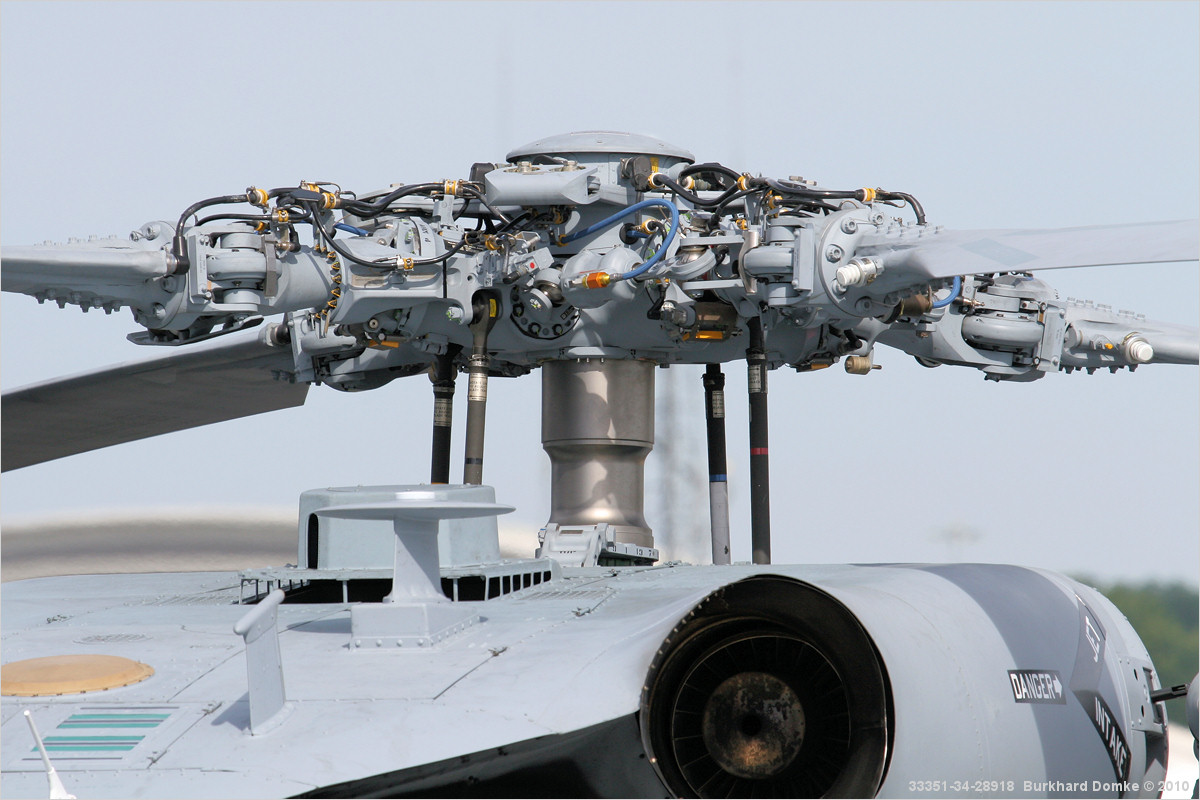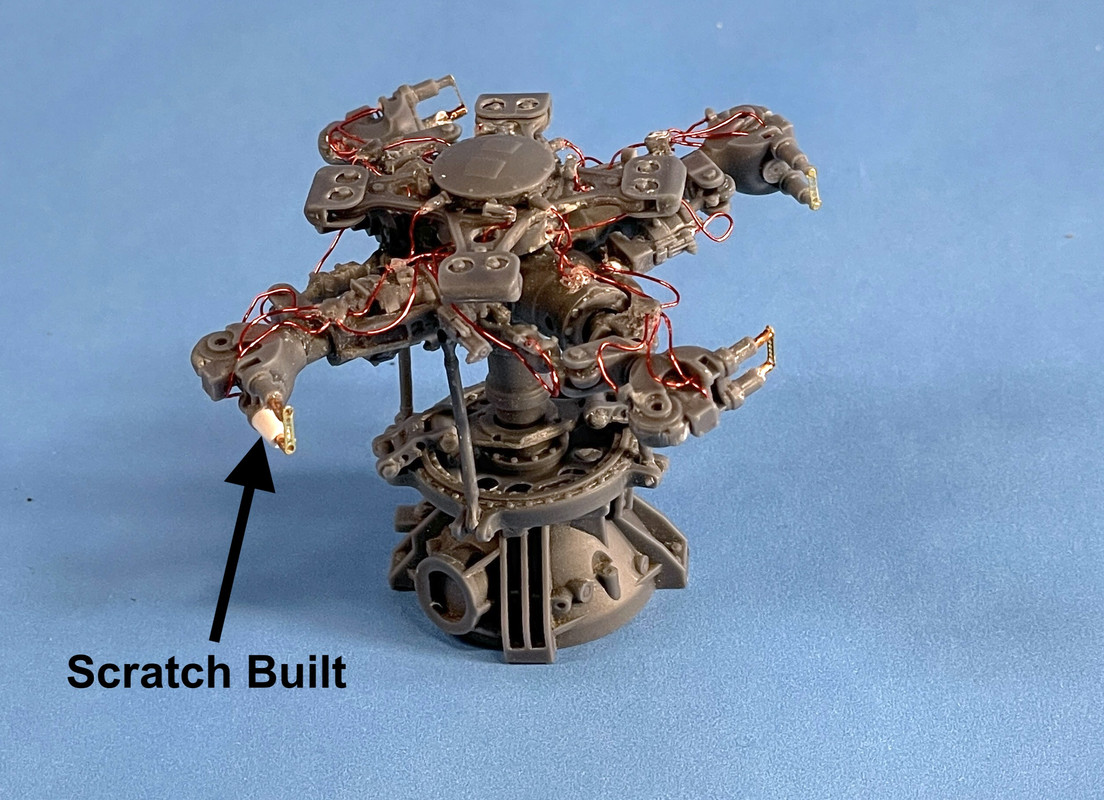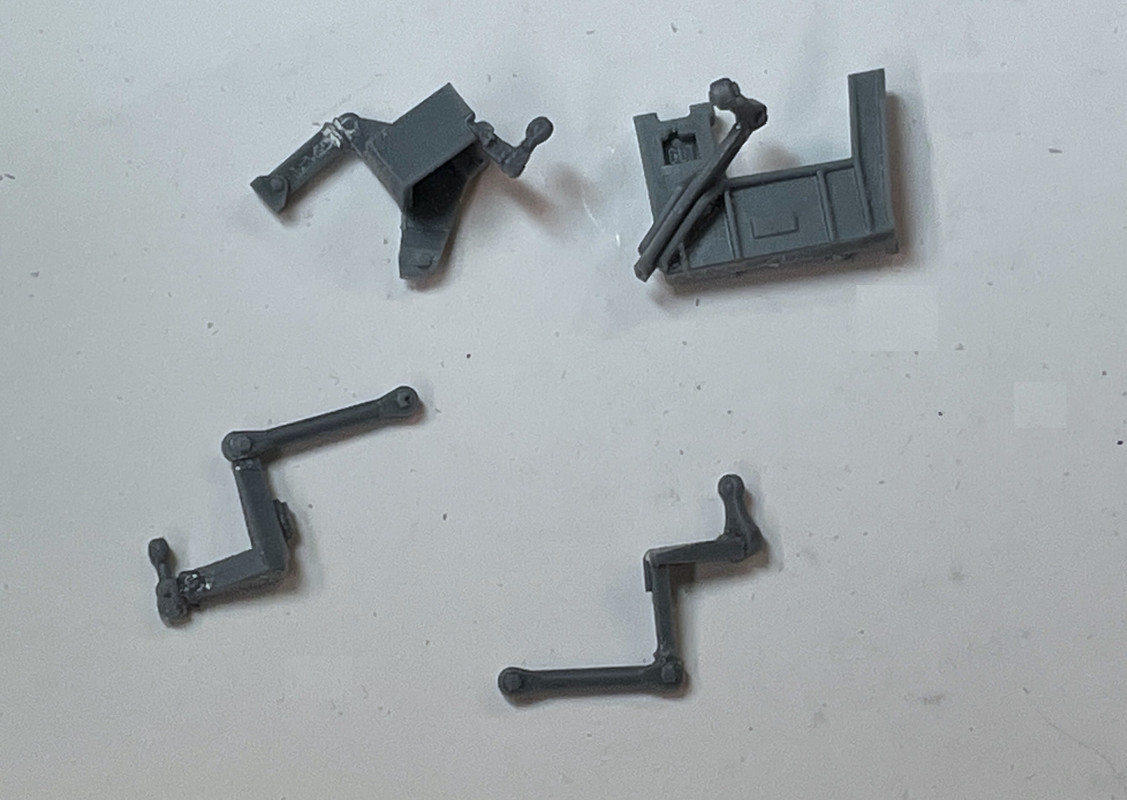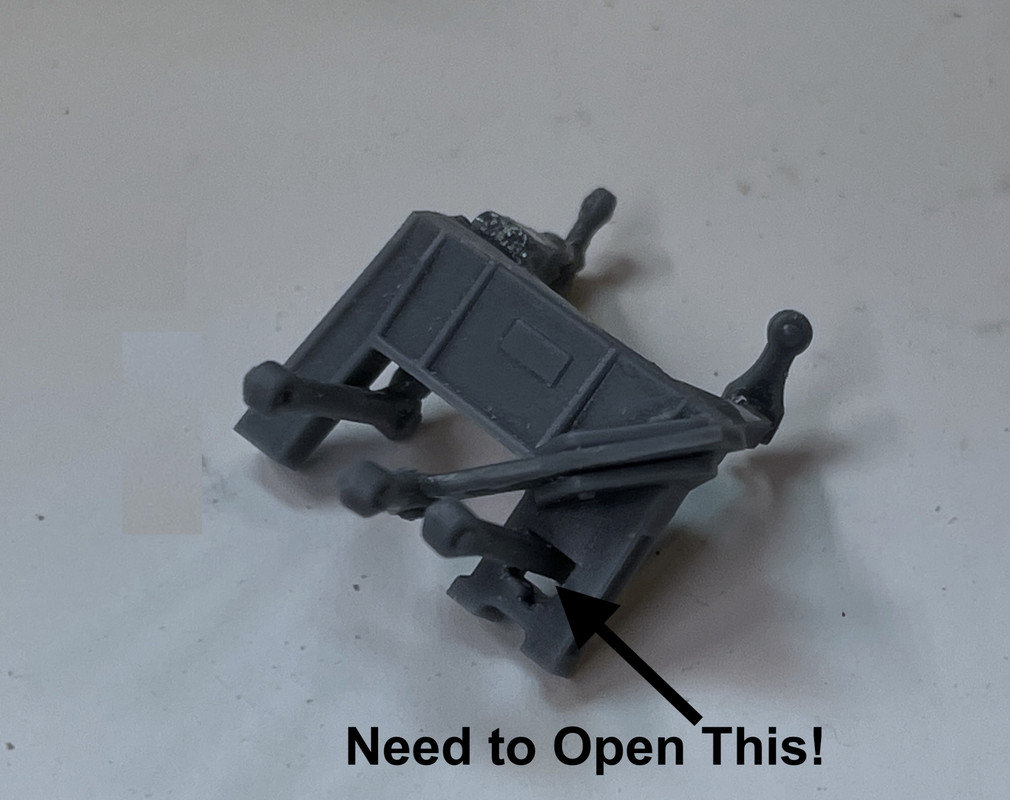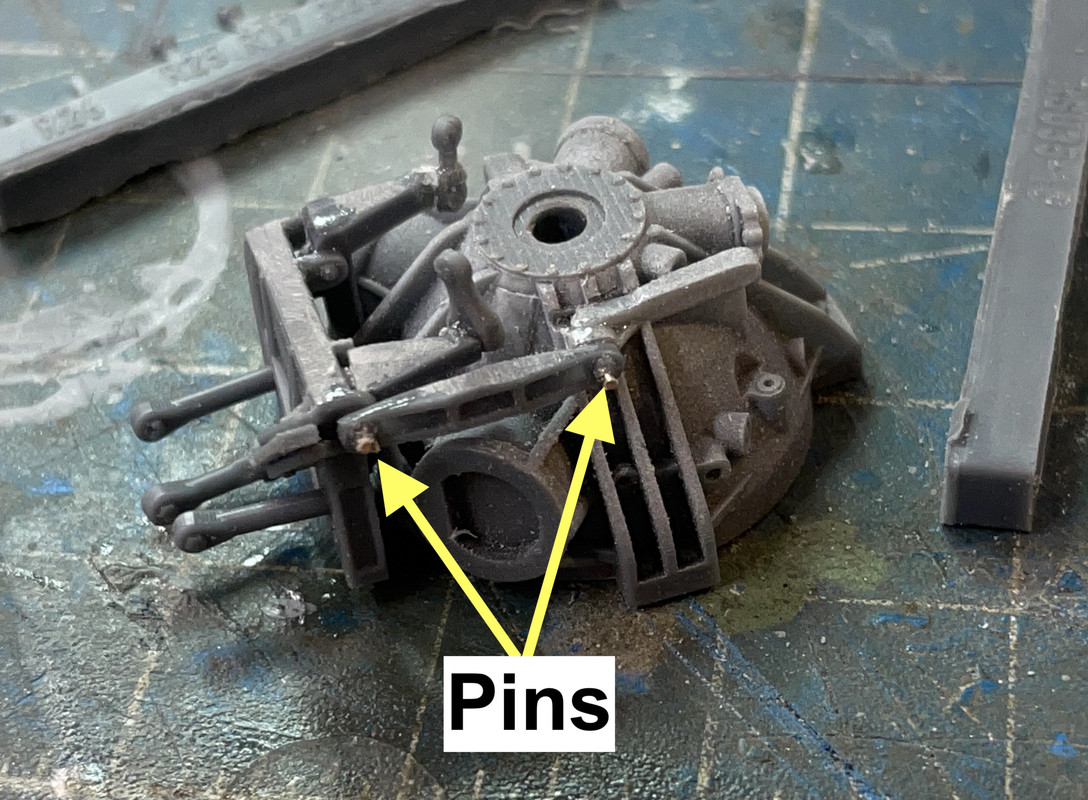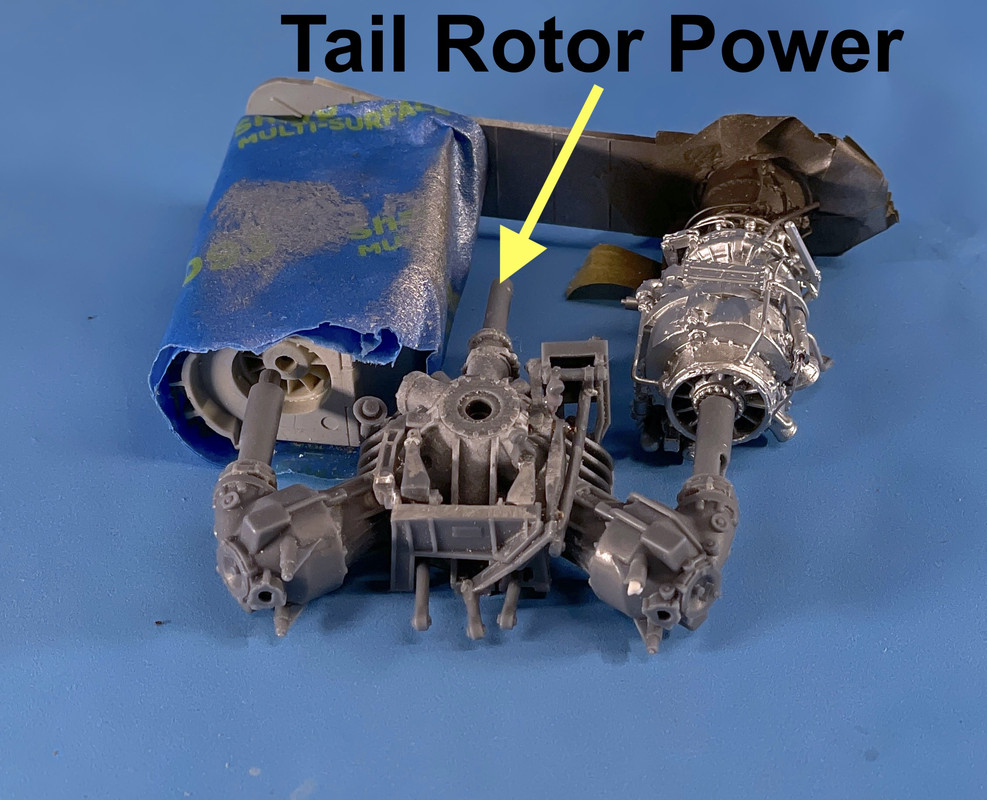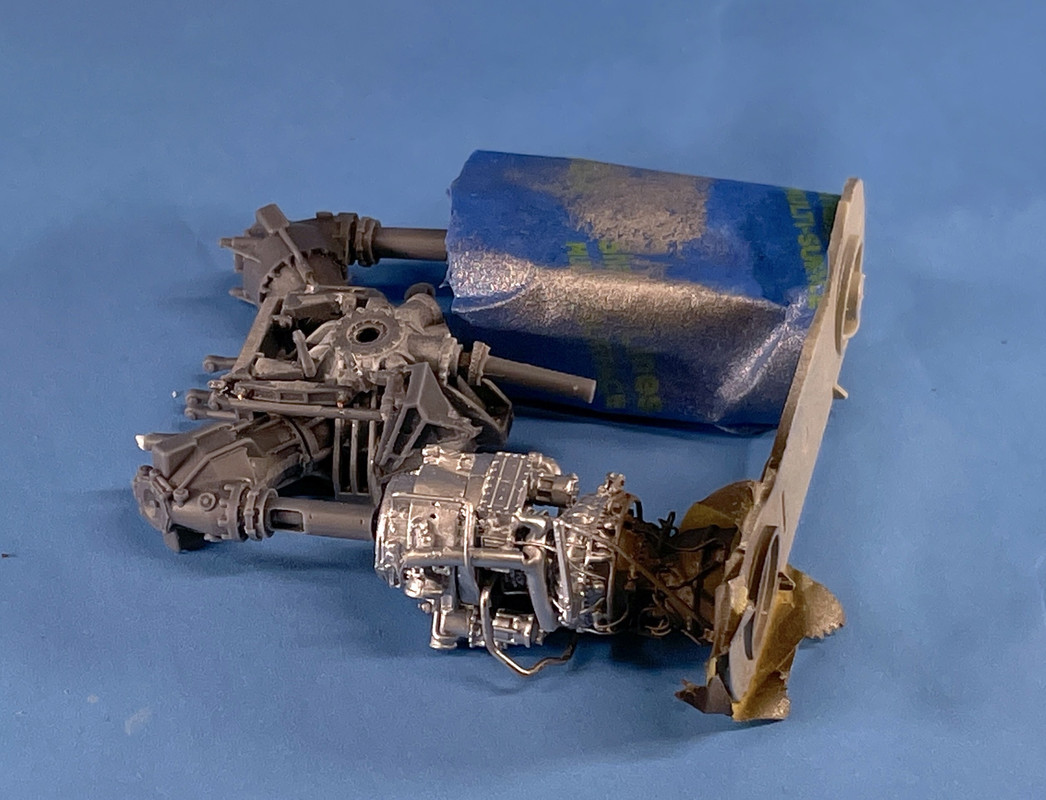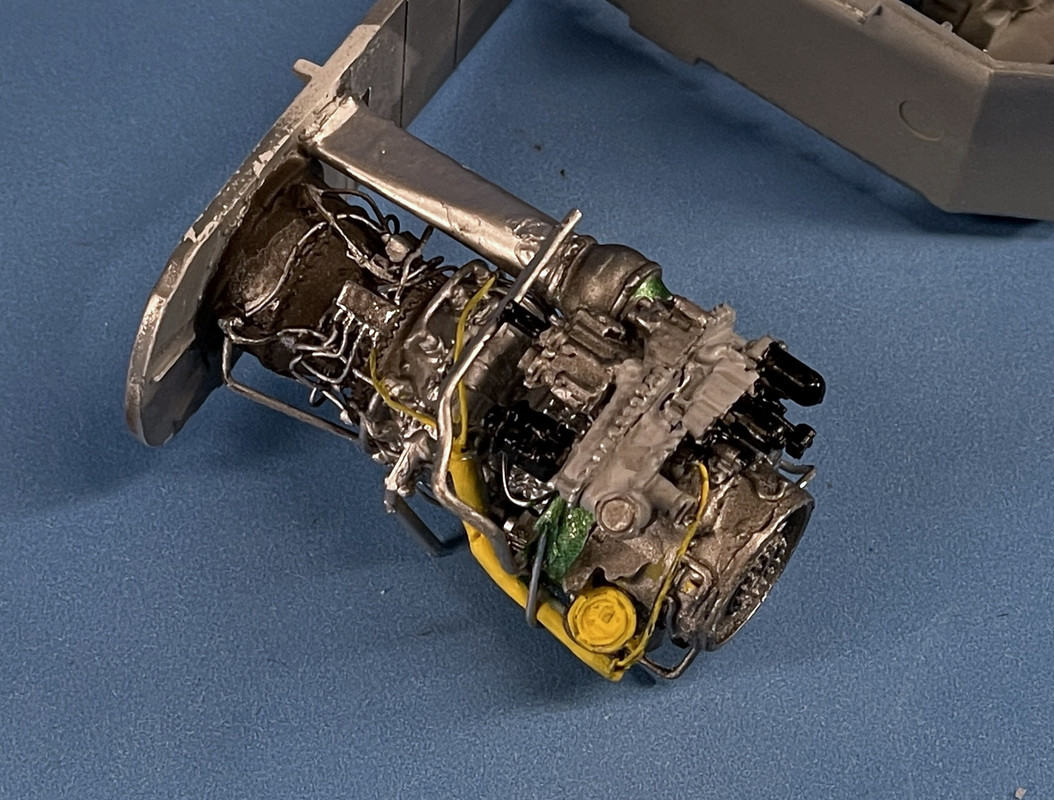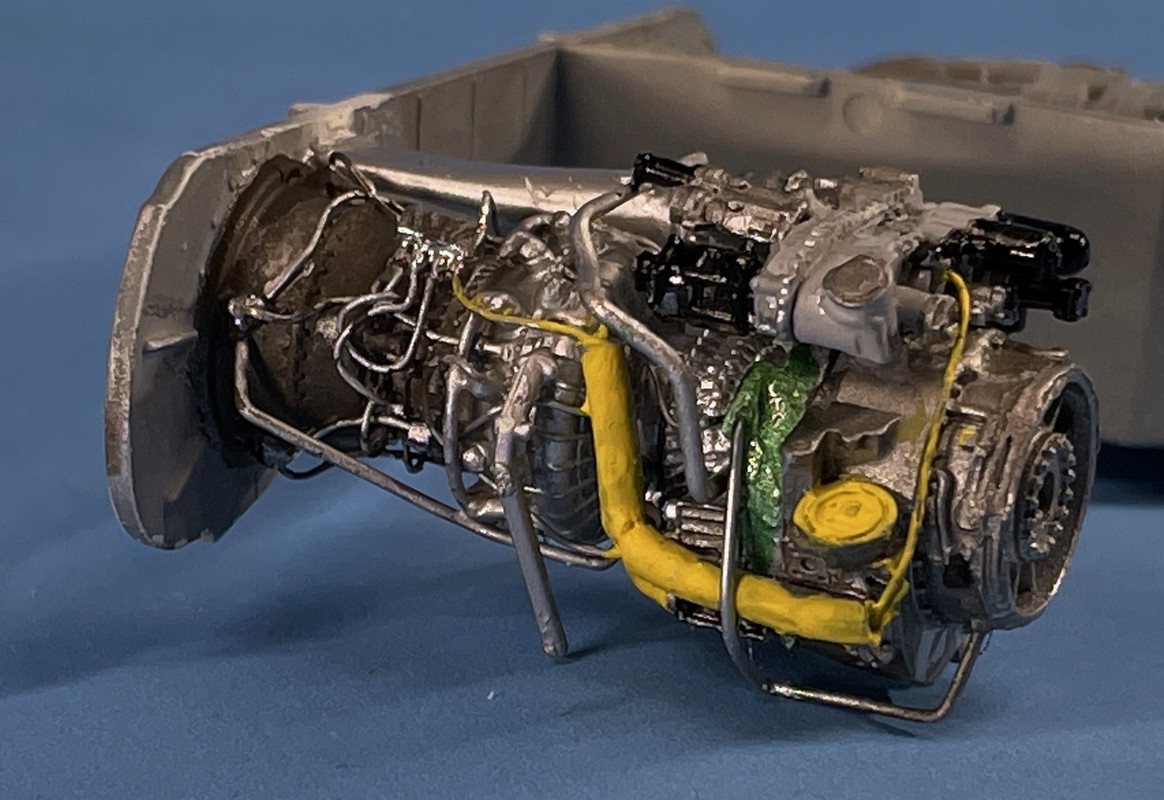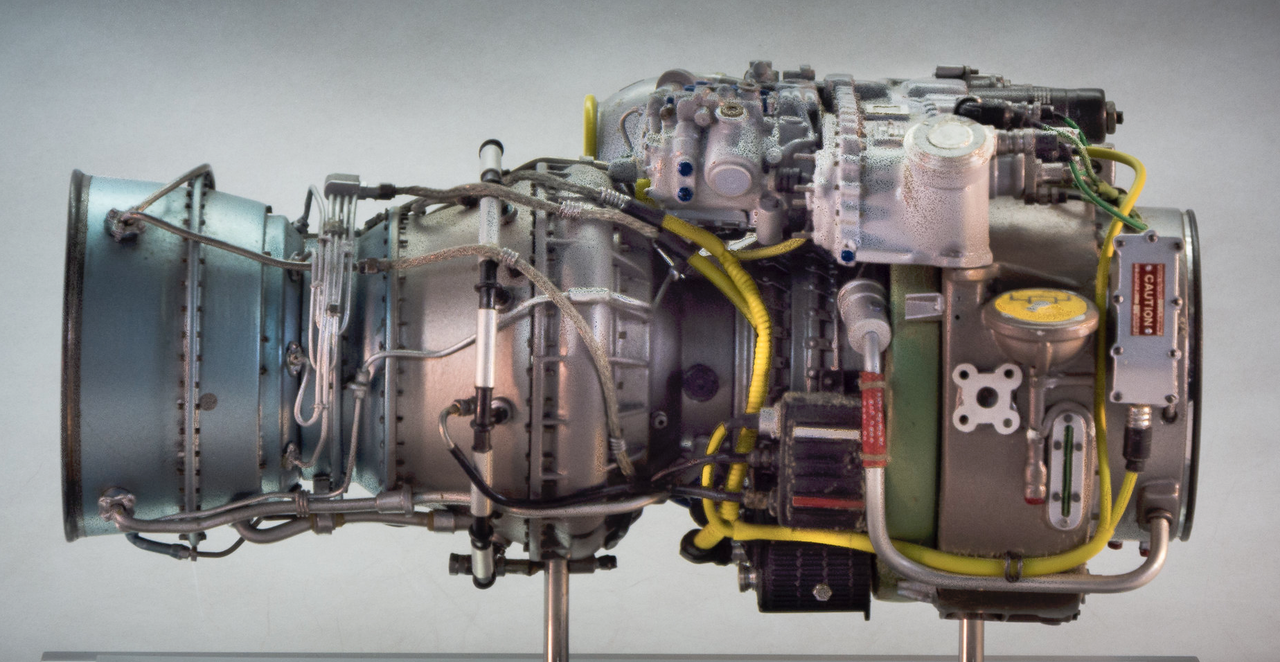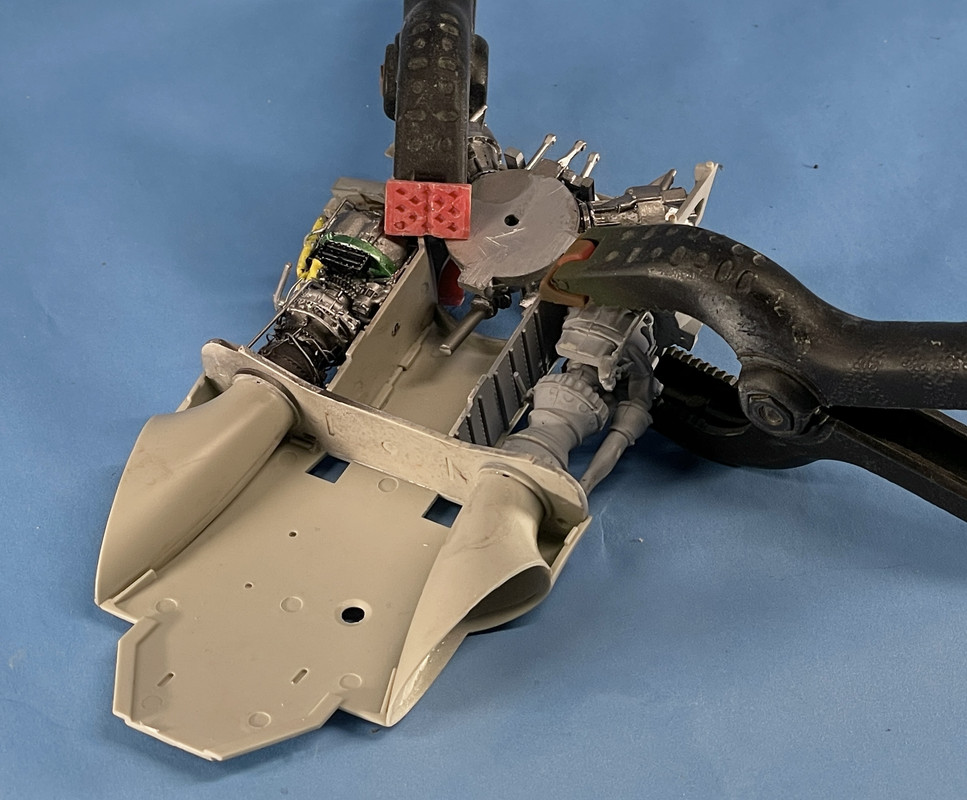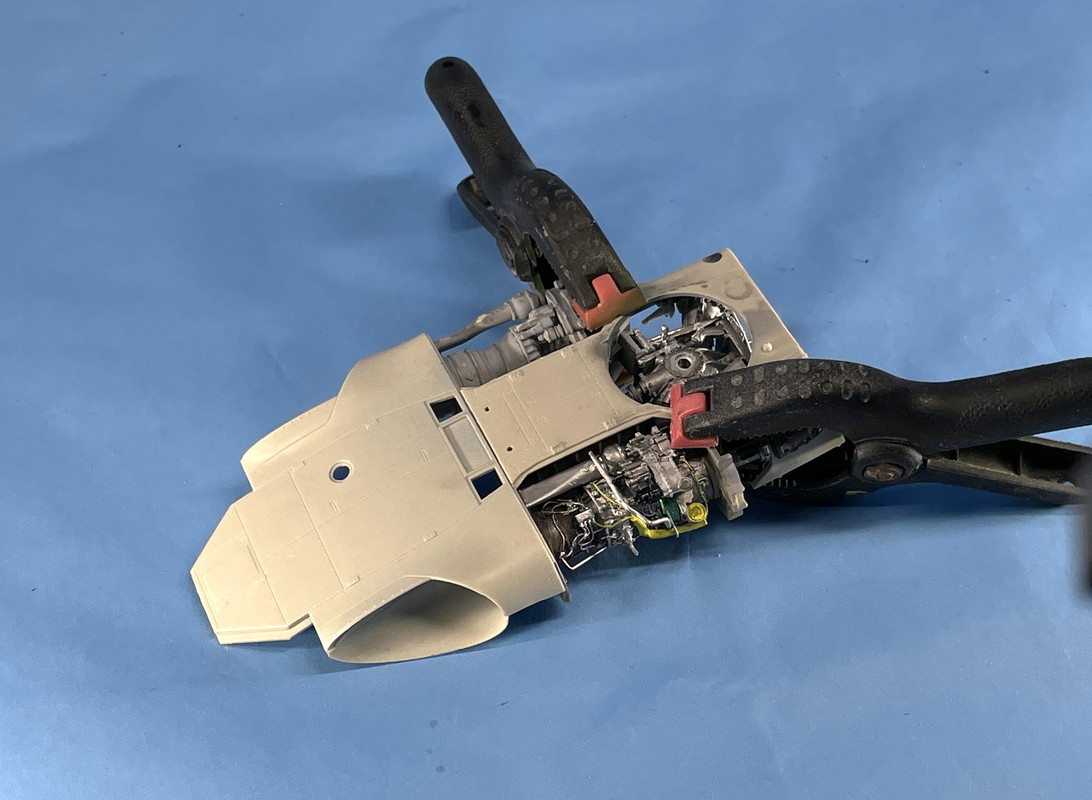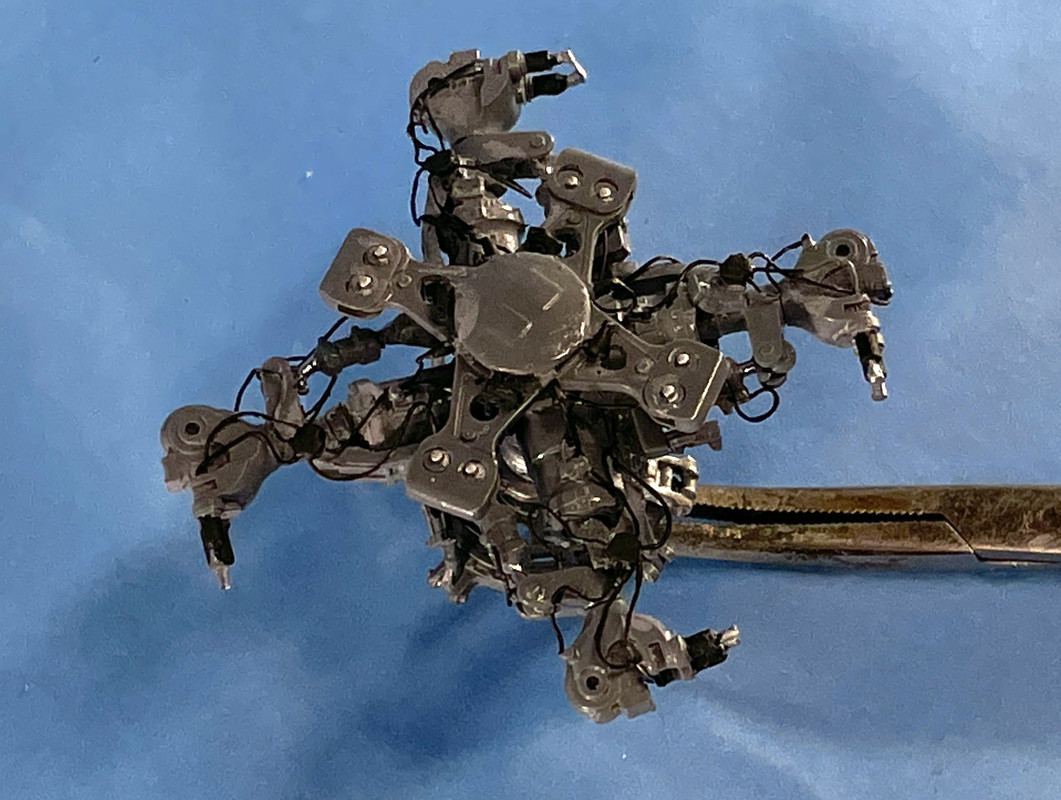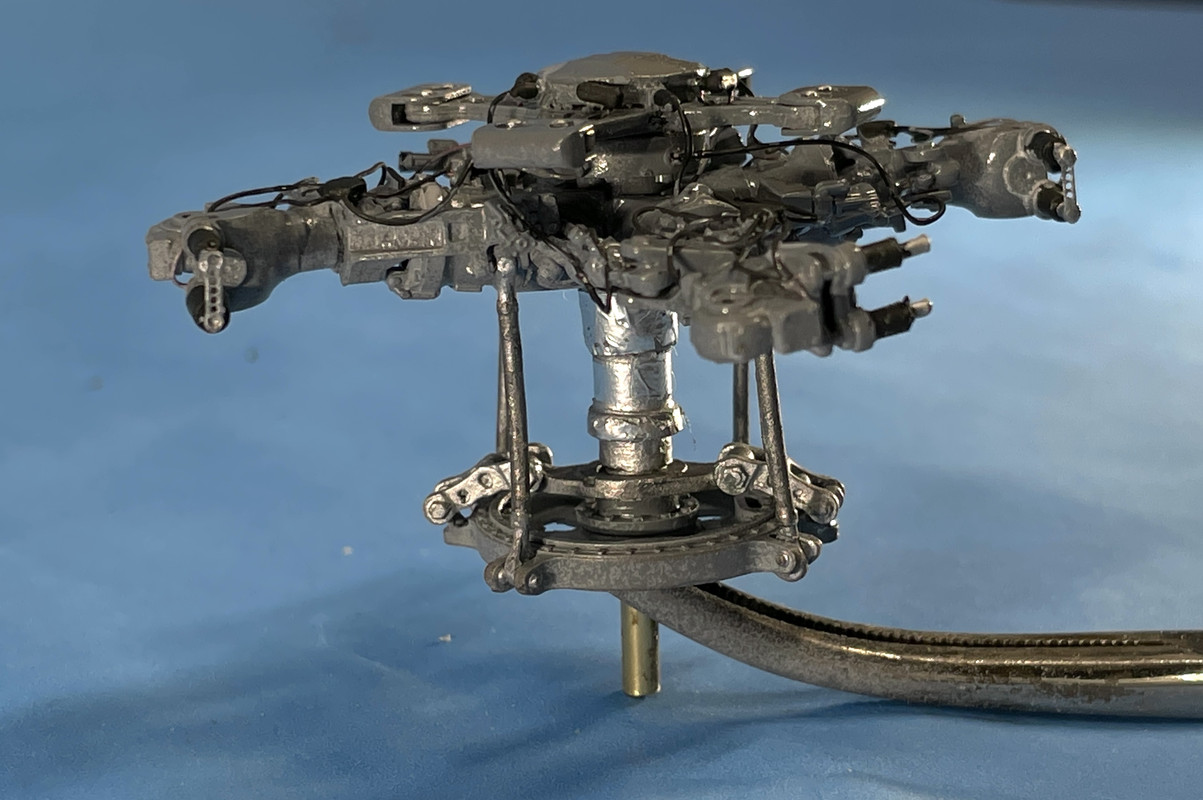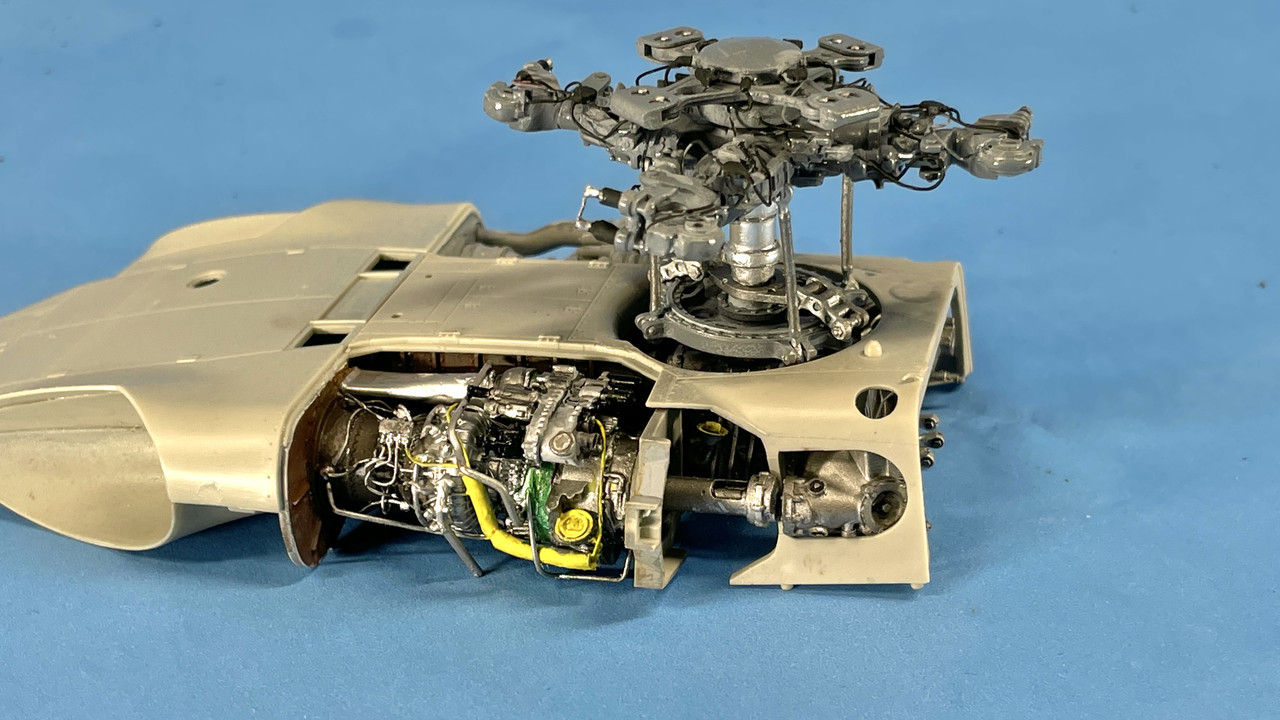Thanks Gino!
I had to replace another resin pipe that broke and will need to replace one more. They’re really fragile! This one was a challenge since it winds its way around the oil filler cap and then through an opening in the cool end bulkhead.
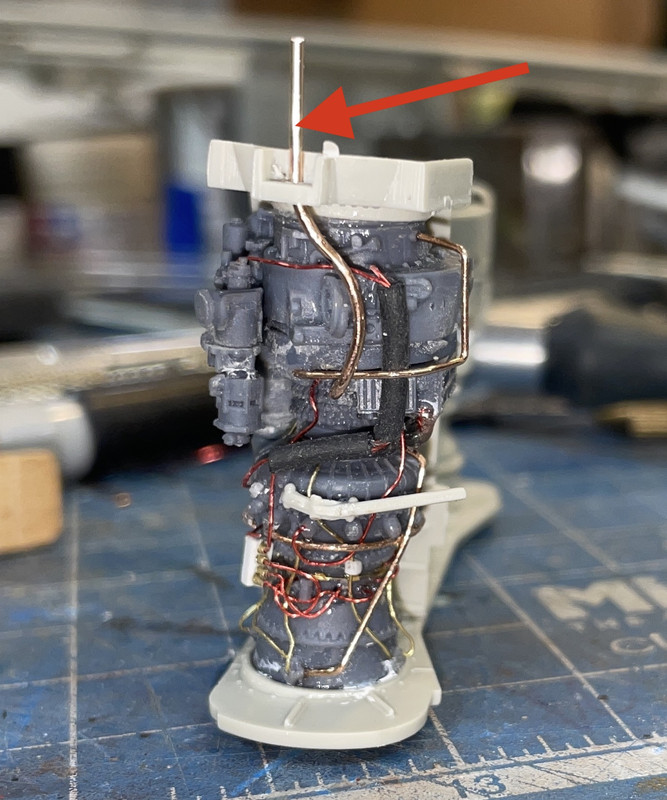
Started getting the engine bay together. Found some images showing their internal color. As best as I can tell it’s basically the same gray as the exterior with a lot of dirt. I mounted the kit engine on its front and back supports. I also fit the ResKit engine and found that one of the resin pipes and one of my mods interfered with the inner wall. You can just make it out in this image.
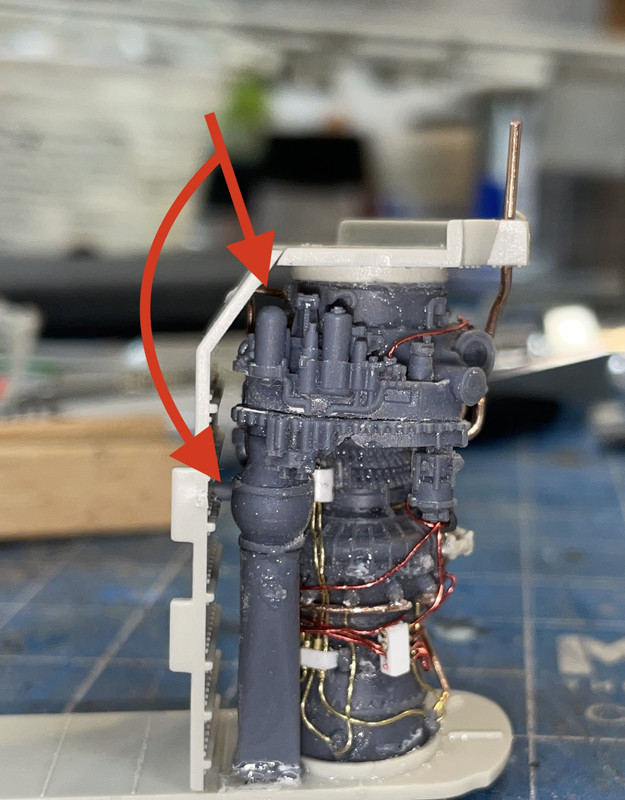
I relieved the wall in these spots and got a good fit.
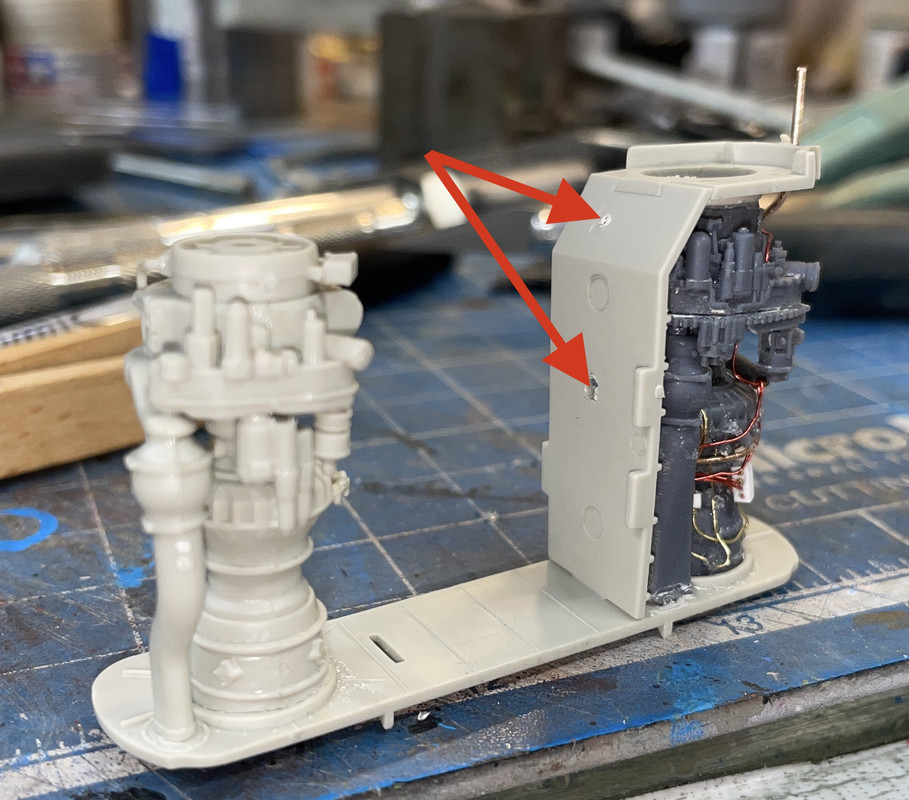
I didn’t glue the ResKit side in now. Instead I primed it and will do the engine painting before encloising it. I will be spraying the entire kit side with the interior color. It will be closed up so the engines only there to hold the bulkheads in place.
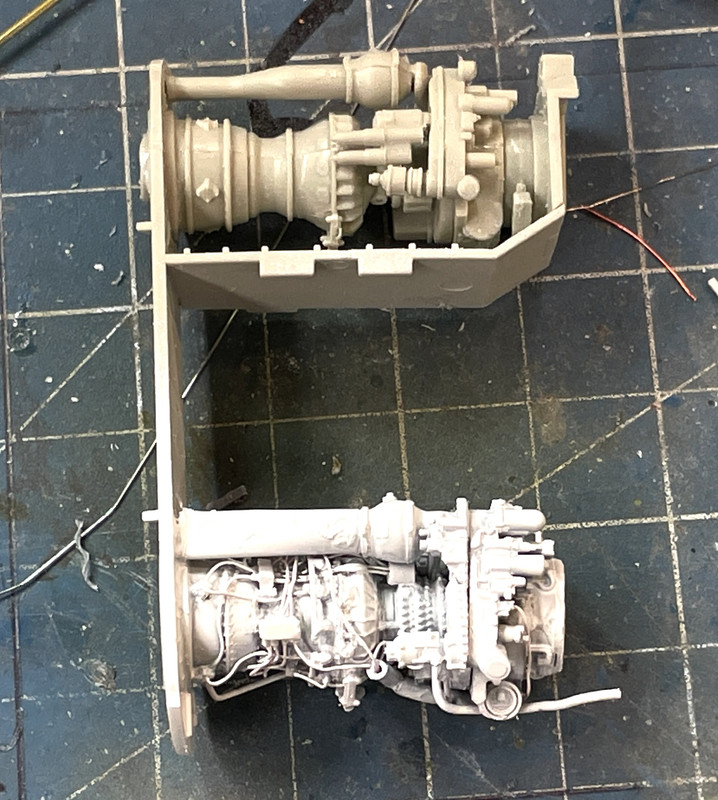
While waiting for the primer to dry I started the next super-challenge in this build: the ResKit Main Rotor kit. Here’s what it looked like in the box. If you look closely you can see the rotor hubs parts attached to their sprue block. They’re the cylindrical pieces.
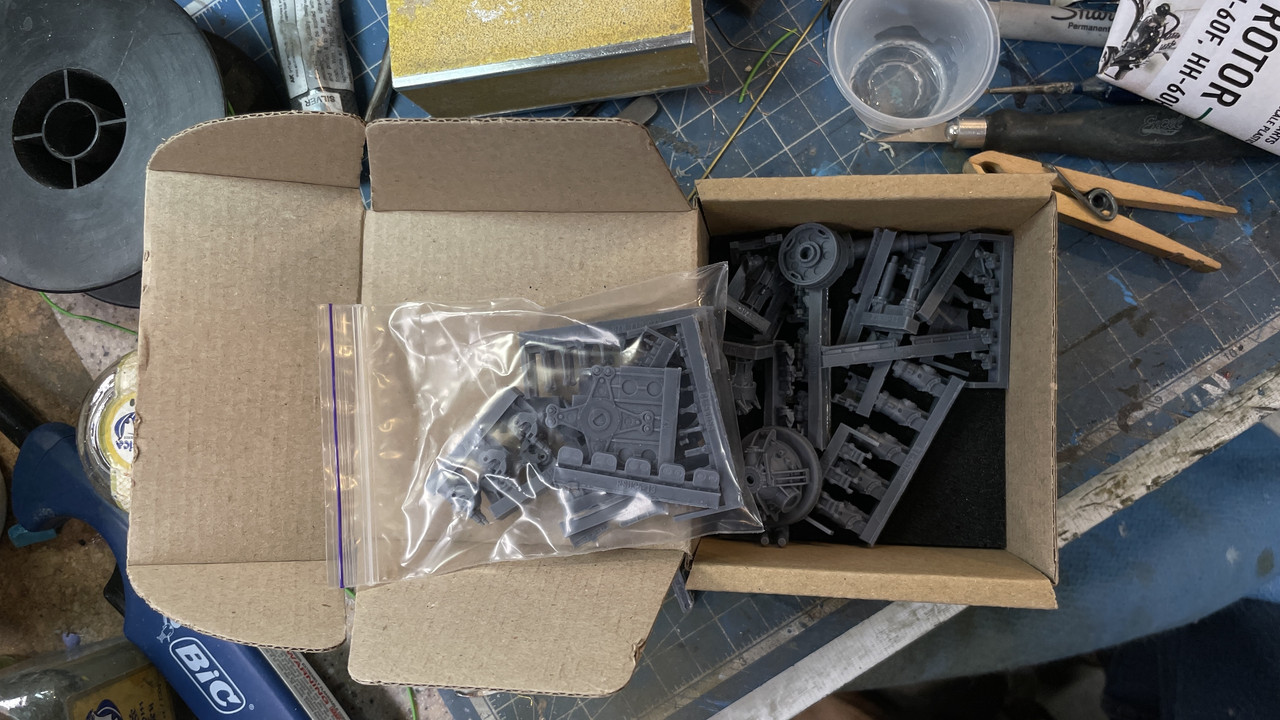
These pieces were VERY DIFFICULT to remove from the sprue. The attached face has the 1/4 cylinder of the central shaft hole. Not only is it a finished round surface, it’s also canted from the perpendicular since the entire rotor head arms have an upward pitch. Then to make matters worse, the four quadrants go together with pin and hole arrangement, but the pin was right in the cutting path you follow to remove the sprue block. I used the needle burr and removed most of the material and then a round burr to re-shape the openning. And I removed half of the pins in the process.
I decided that all the resin pins had to go and replaced them with 1/32" phos-bronze.
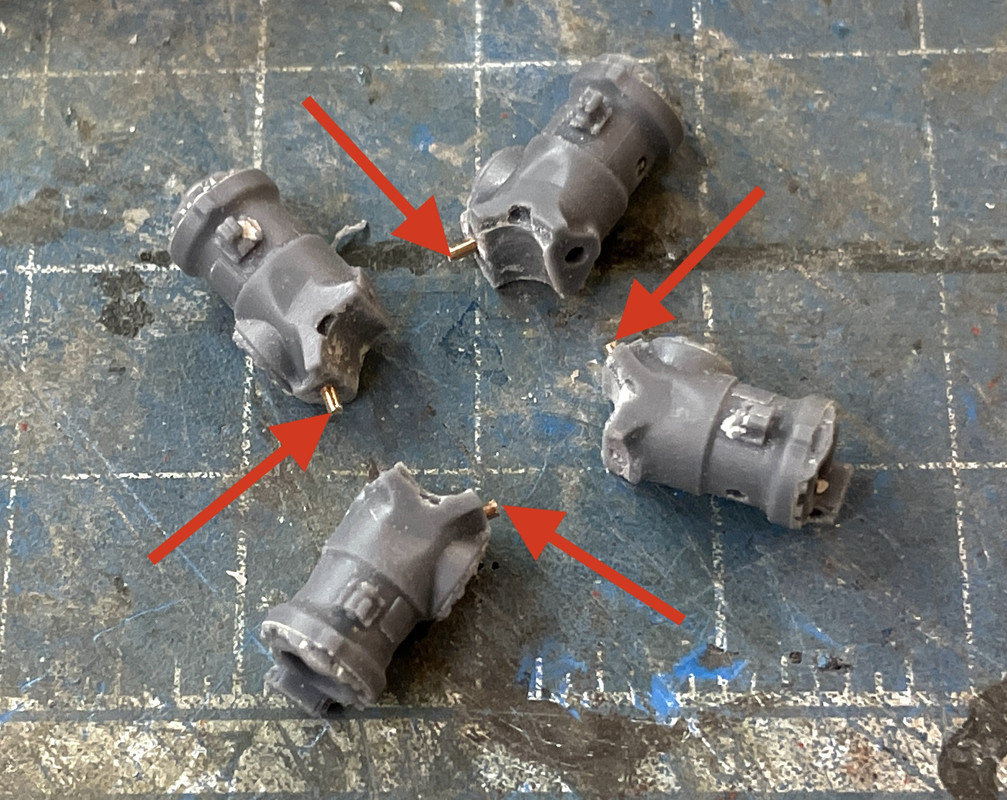
I got the four parts together as I figured they should go using gel and thin CA. I then went through the hole with a series of drills spun by hand to open it up and round it. It’s still a tad tight on the shaft so one more drill size to get the slip fit I want. Press fits can break the joints. Any slight misalignment will be hidden by the blades in the folded position.
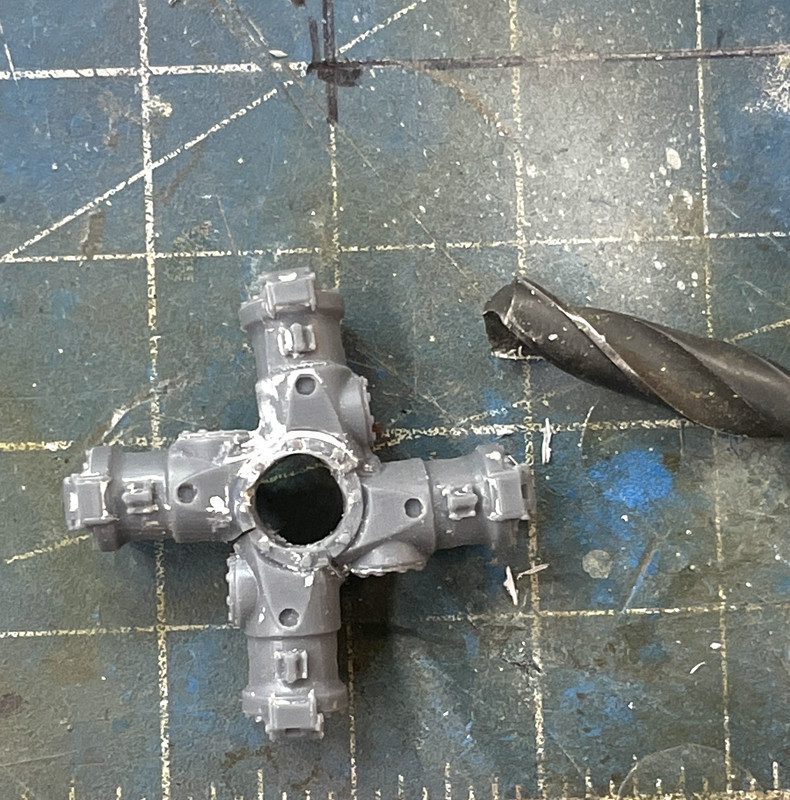
I’d love to make a diorama with service being done to this bird and would like to find some 1/35 green shirt characters to fill it out. Any suggestions?
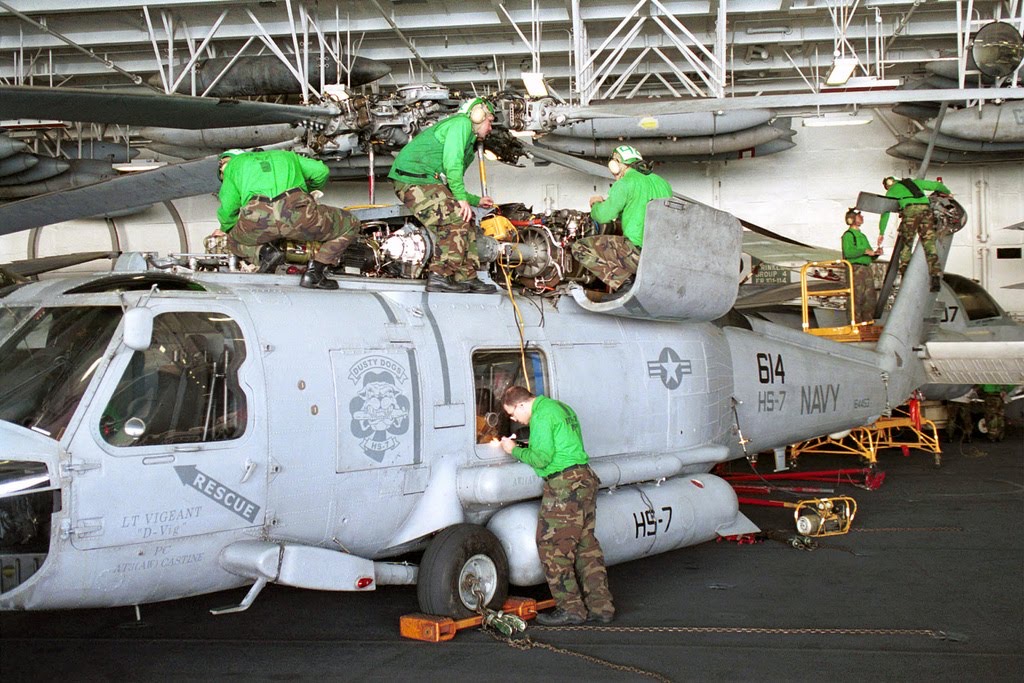
Also found an image showing an engine that’s been in service. Good color study.
